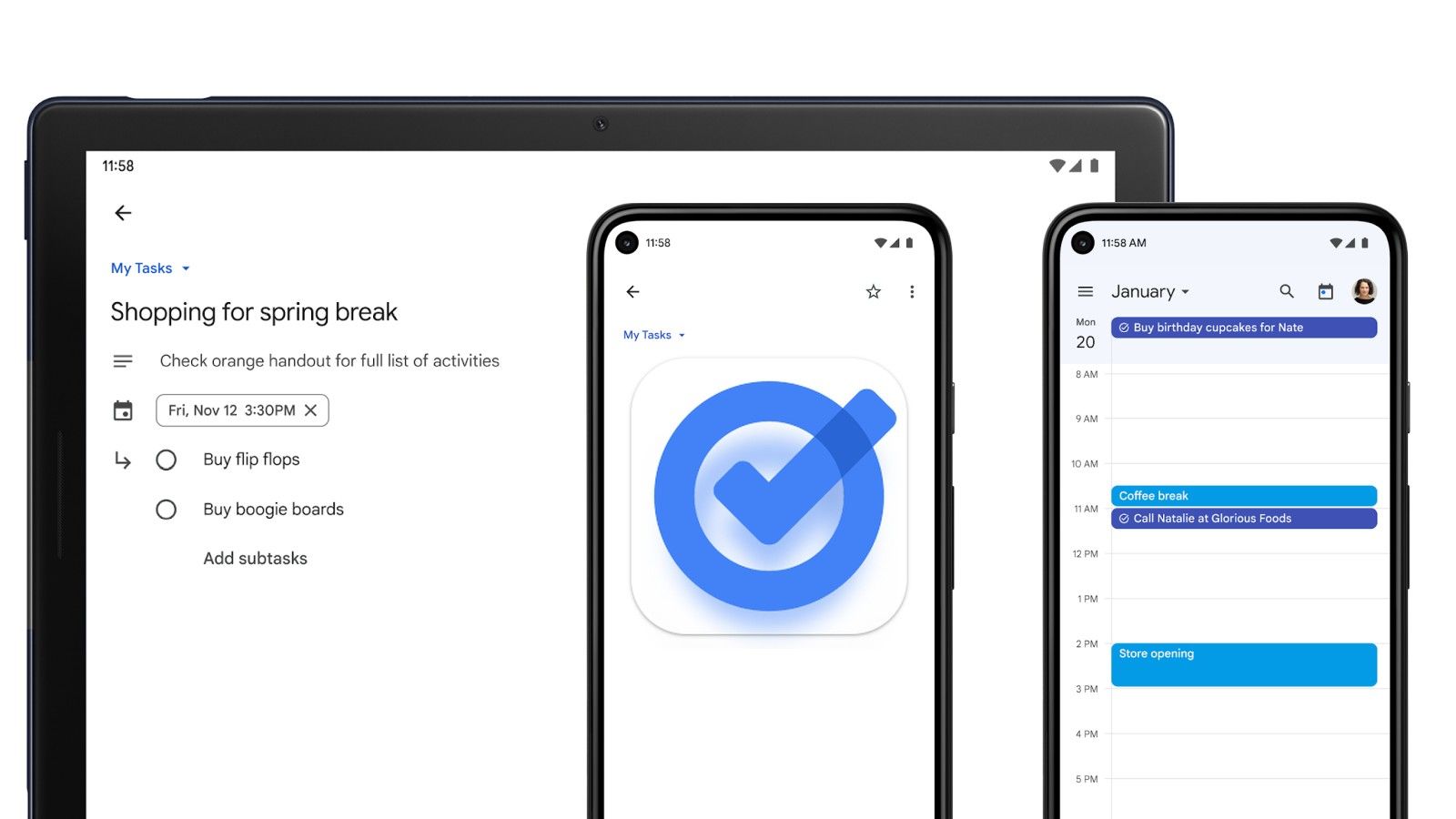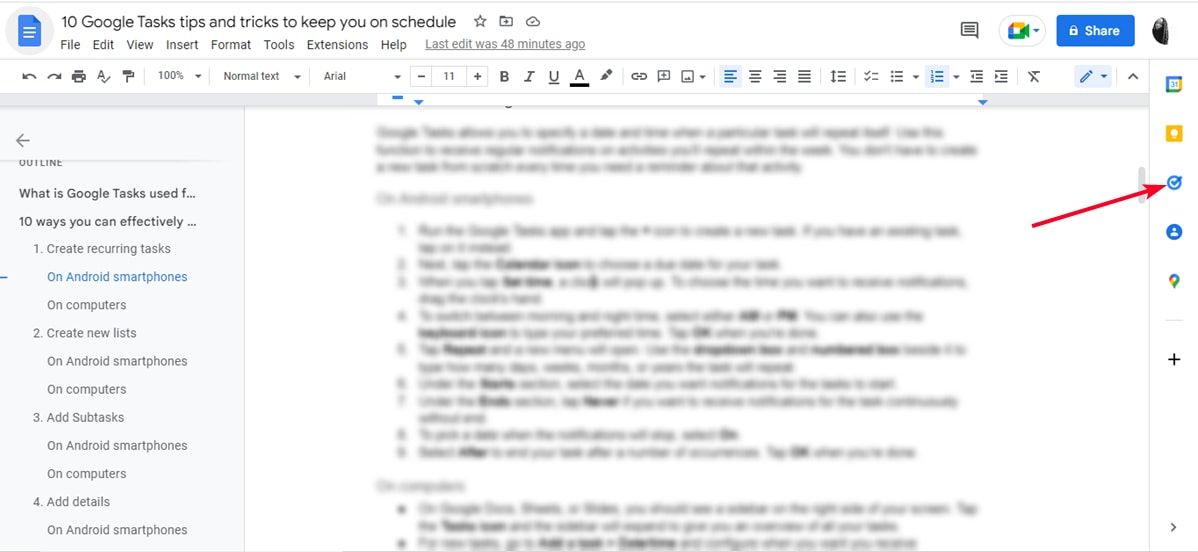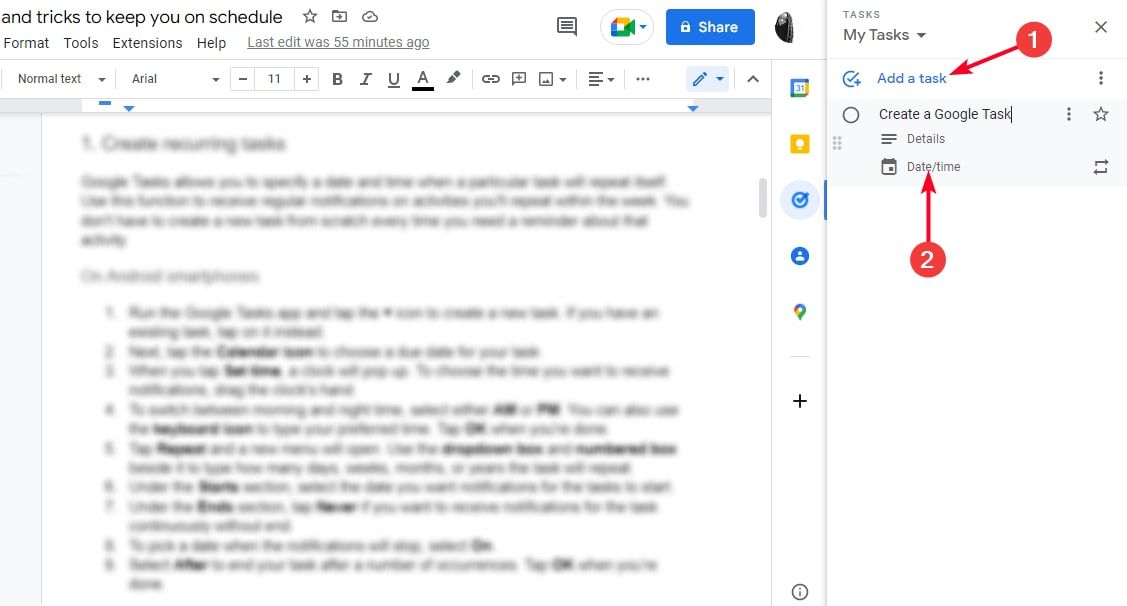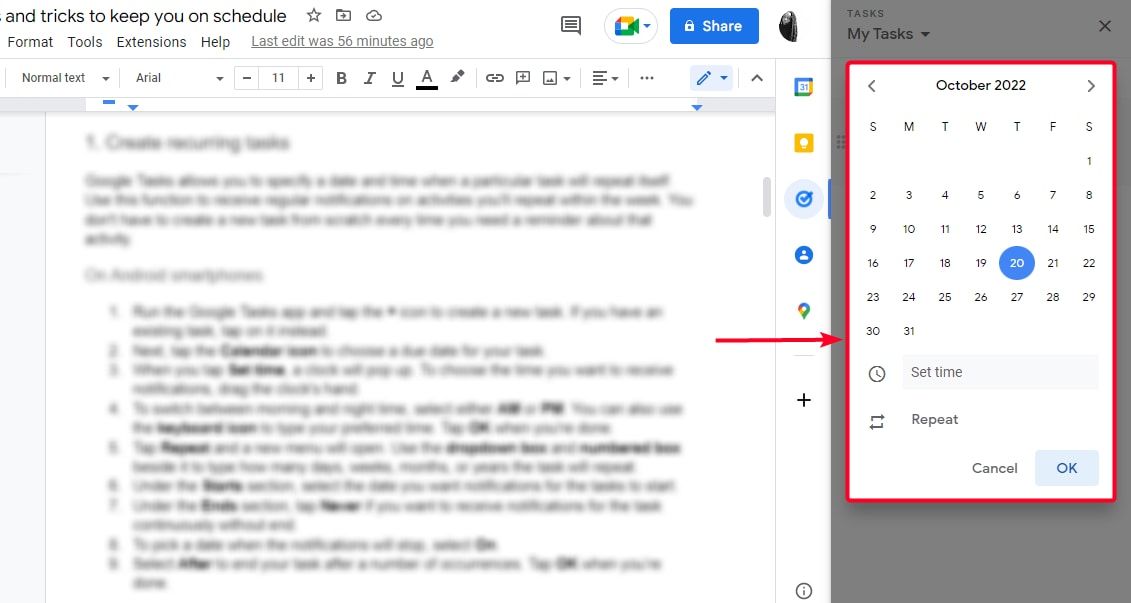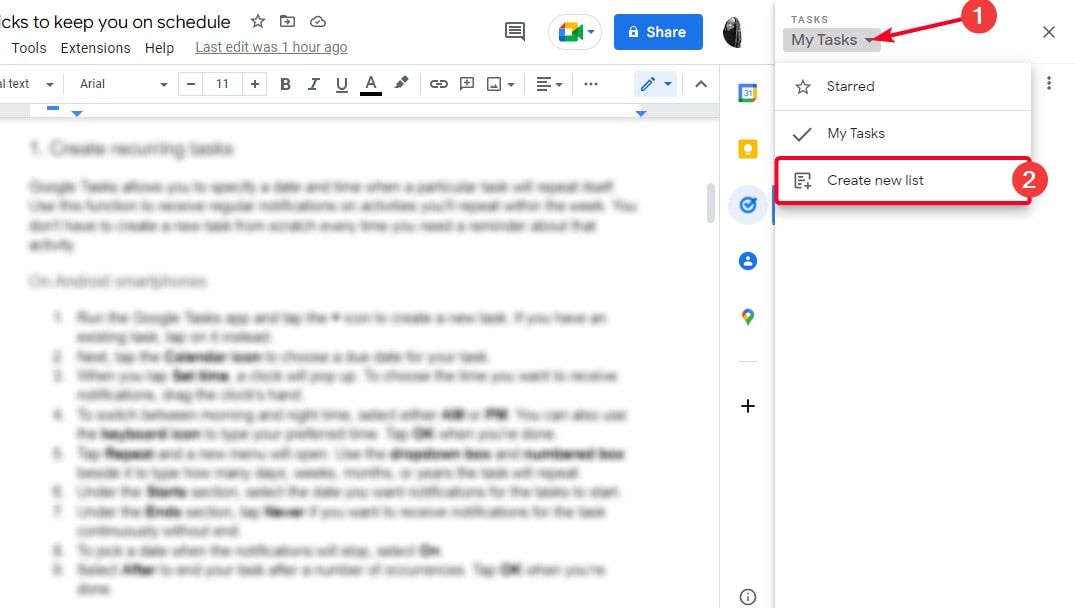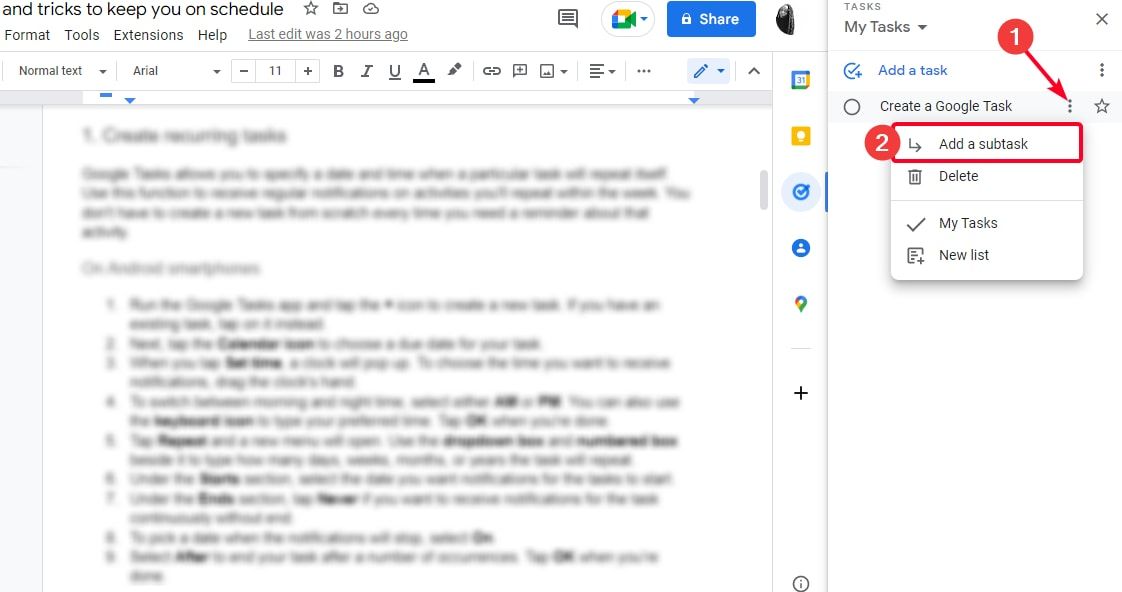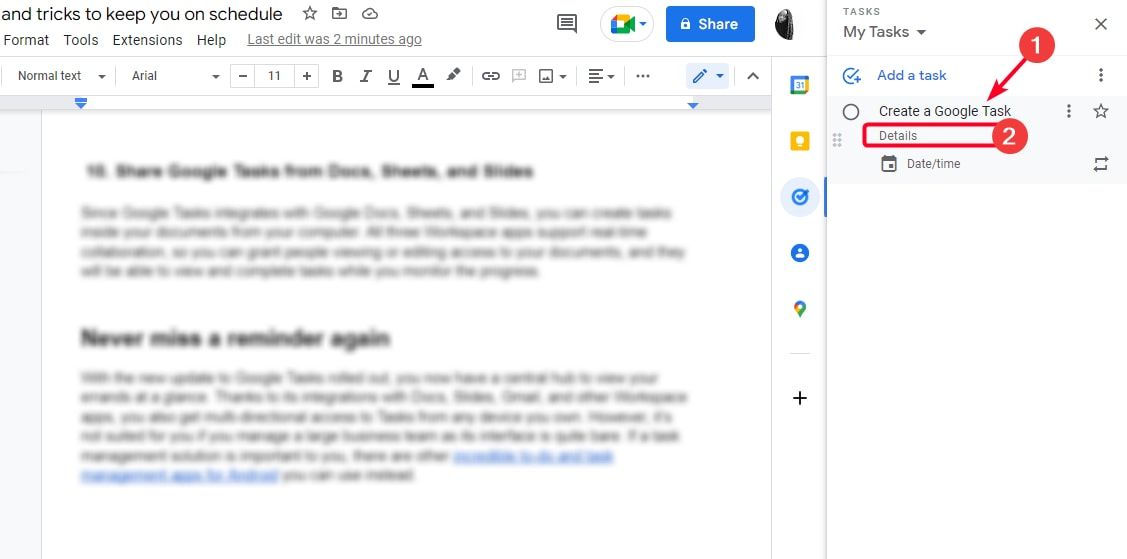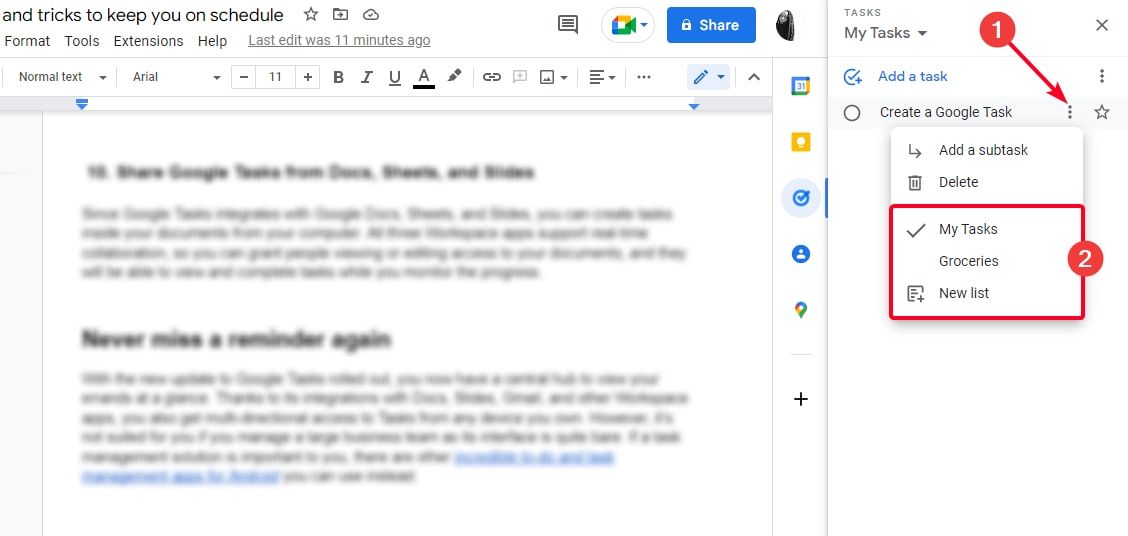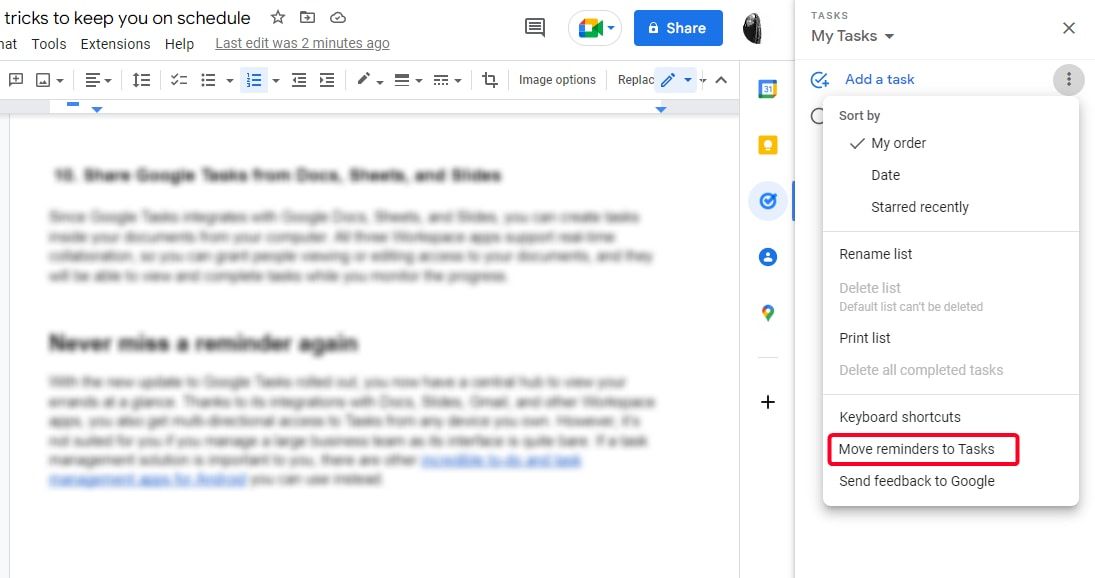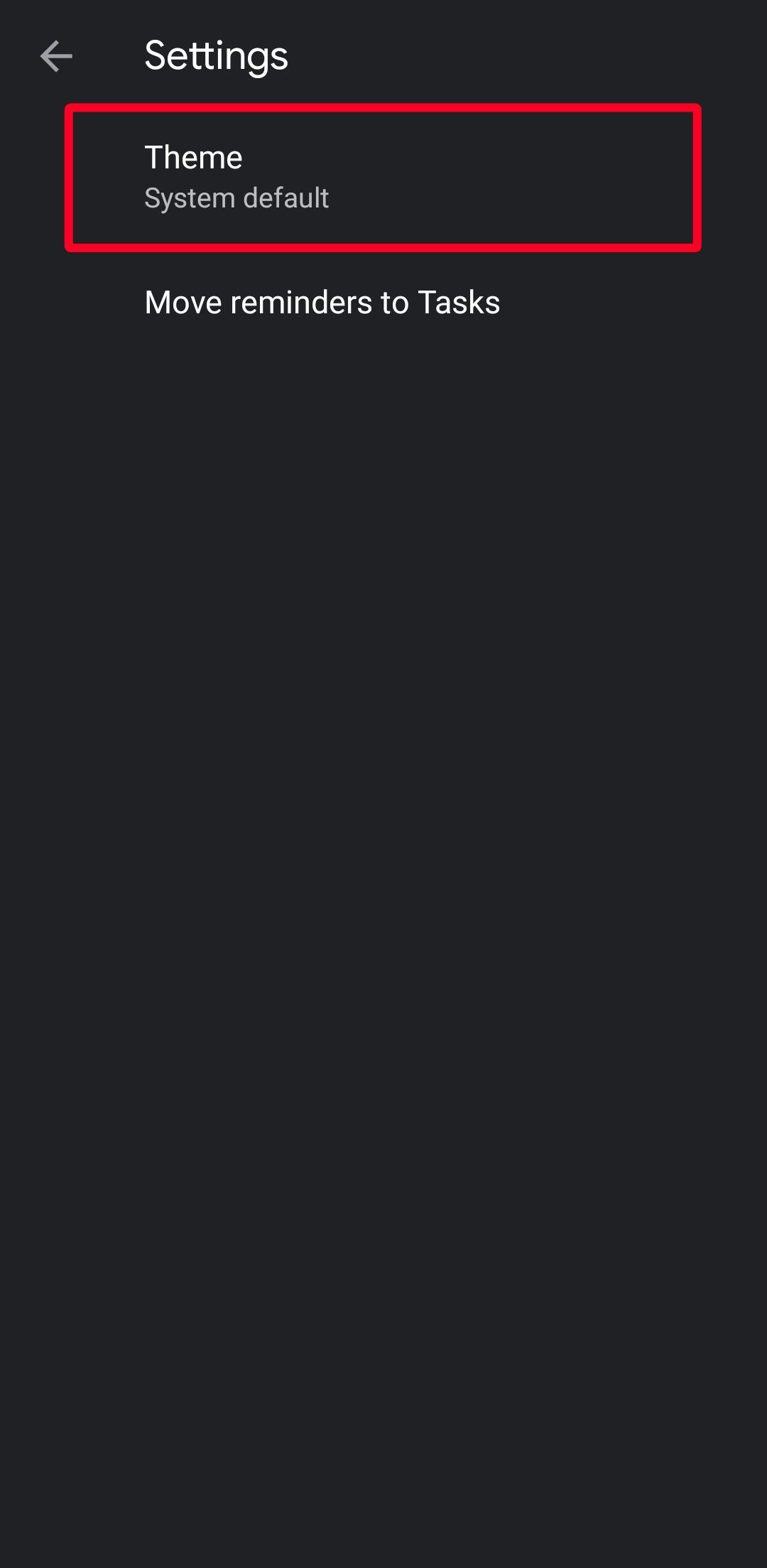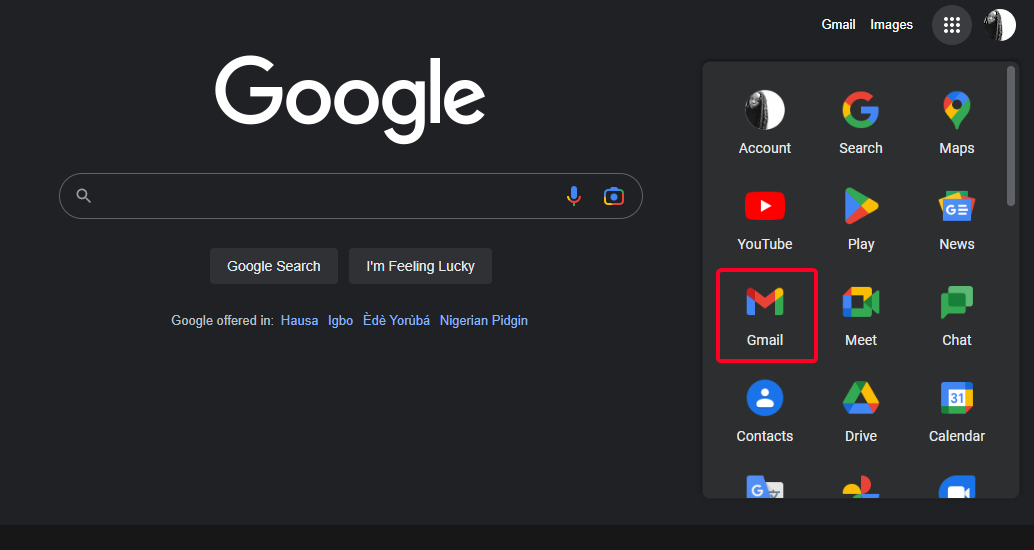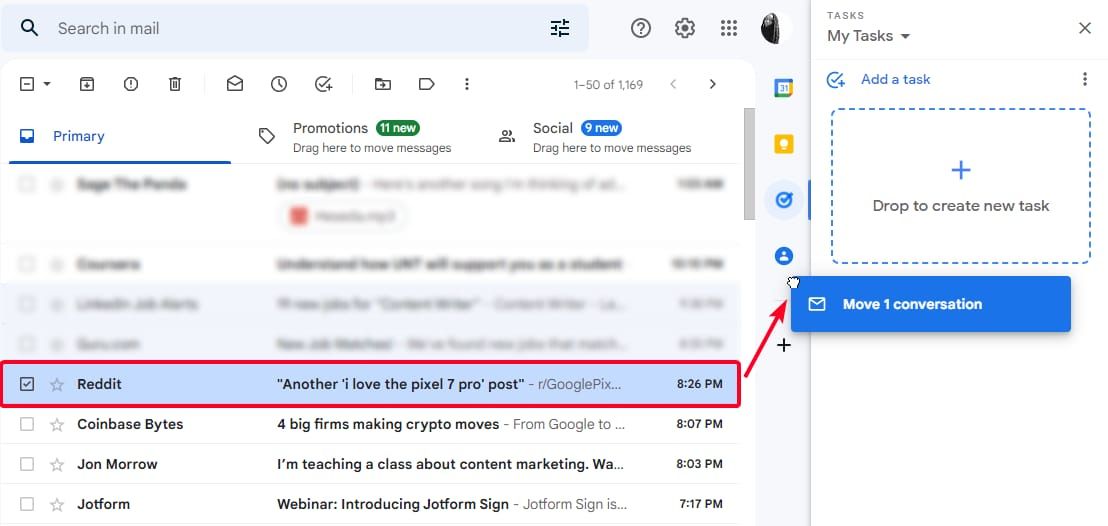Google Tasks is a standalone app that helps you create tasks and subtasks, set reminders, and add detailed notes so that you can stay on top of your to-do list. Although the app isn't as robust as other task management apps like Todoist and Trello, Google Tasks is a great option for Google power users, thanks to the app's seamless integration with Gmail, Google Docs, and Google Calendar. The Google Tasks app works well on Android and iOS, while the web version can be used on PCs, laptops, and budget Chromebooks.
If you want to organize your daily tasks and increase your productivity, here are 10 tips and tricks to use Google Tasks and achieve that goal.
What is Google Tasks used for?
Google Tasks is a free to-do list application that organizes your everyday activities. You can create tasks and assign due dates and a time to them. There's a subtask option for breaking down complex projects into smaller bits. When your task meets the deadline, you'll receive a notification on your device and can mark it as complete or set it to repeat at a later date.
You can also separate tasks into lists, which is beneficial if you want to keep work and personal chores separate. The app is part of Google Workspace, and you can access it for free with a Google account. You'll download and install Tasks from the Google Play Store or Apple Store, as it's not preinstalled on your phone. However, there isn't an app for PCs, and you can only access it as an add-on to the web app versions of Google Docs, Sheets, and Slides.
You can perform the following procedures on your Android smartphone or computer, but it's easier with phones as there's a mobile app with every feature you need in one place. On your computer, you'll use Google Docs, Sheets, or Slides to access Google Tasks as an add-on.
Create recurring tasks
Google Tasks allows you to specify a date and time when a task will repeat. Use this function to receive regular notifications of activities you'll repeat within the week. You don't have to create a new task from scratch when you need a reminder about that activity.
Create recurring tasks on Android phones
-
Open the Google Tasks app and tap the + icon to create a new task.
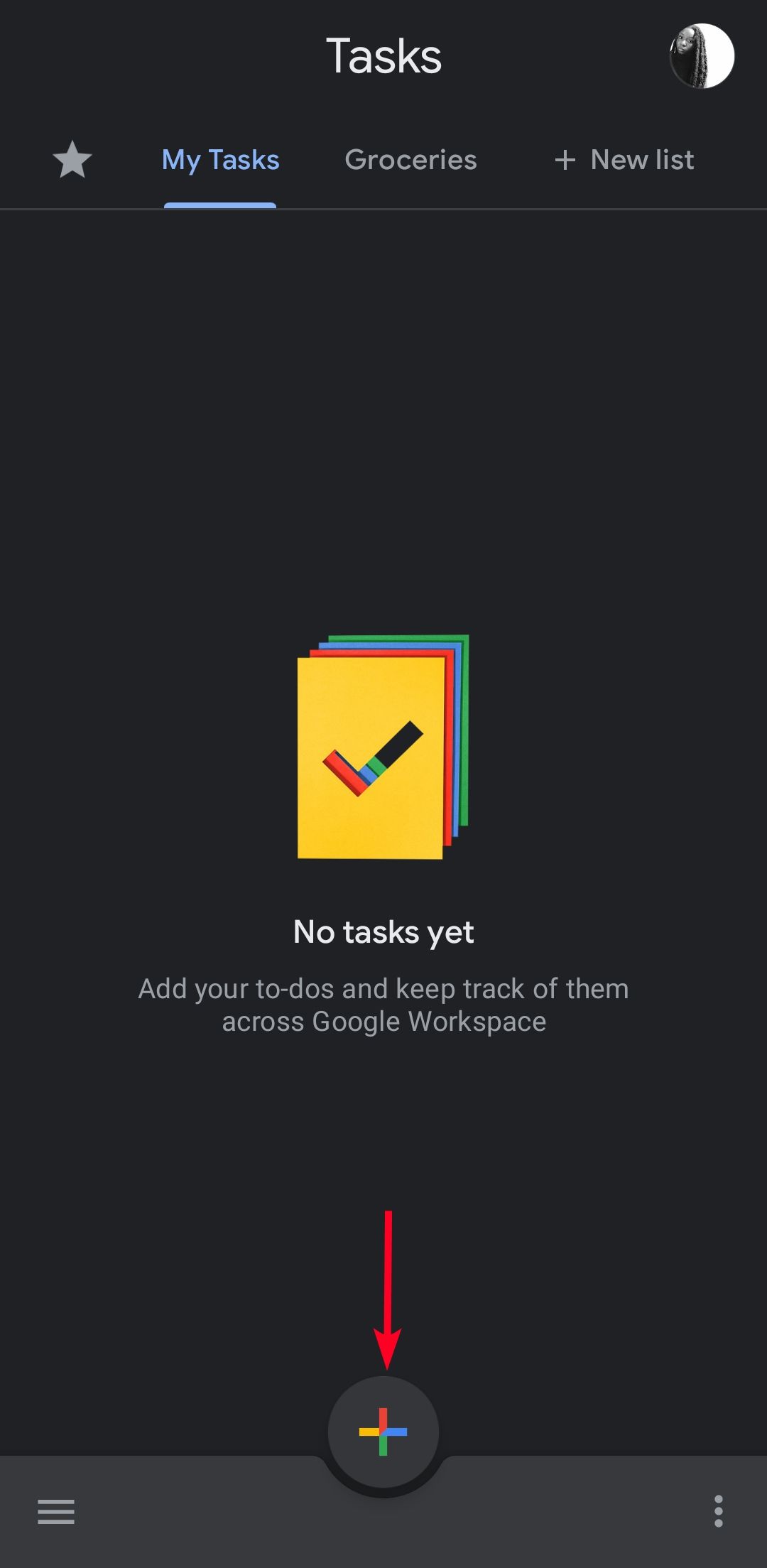
- Tap the Clock icon to open a calendar.
-
Select a date.
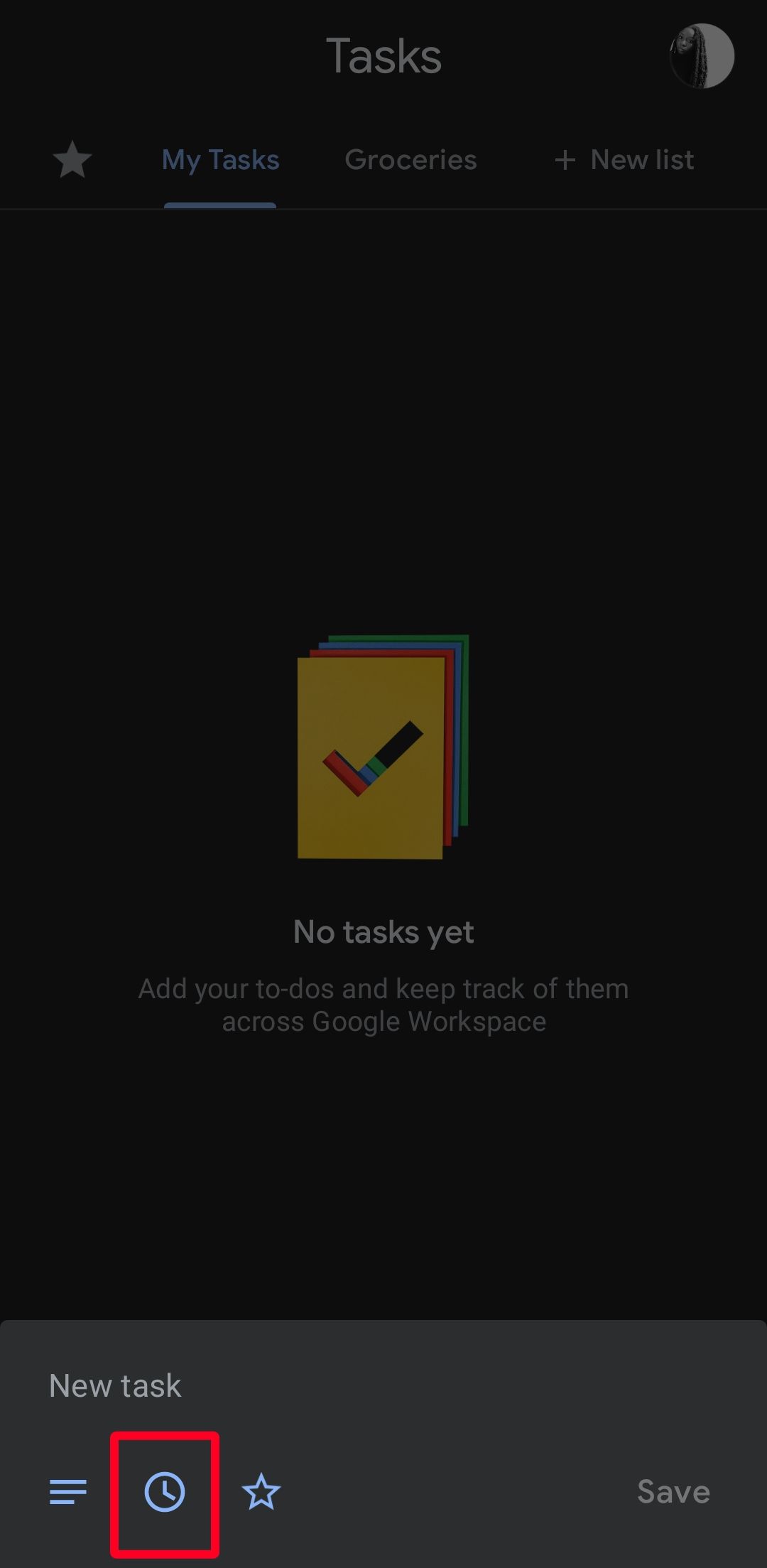
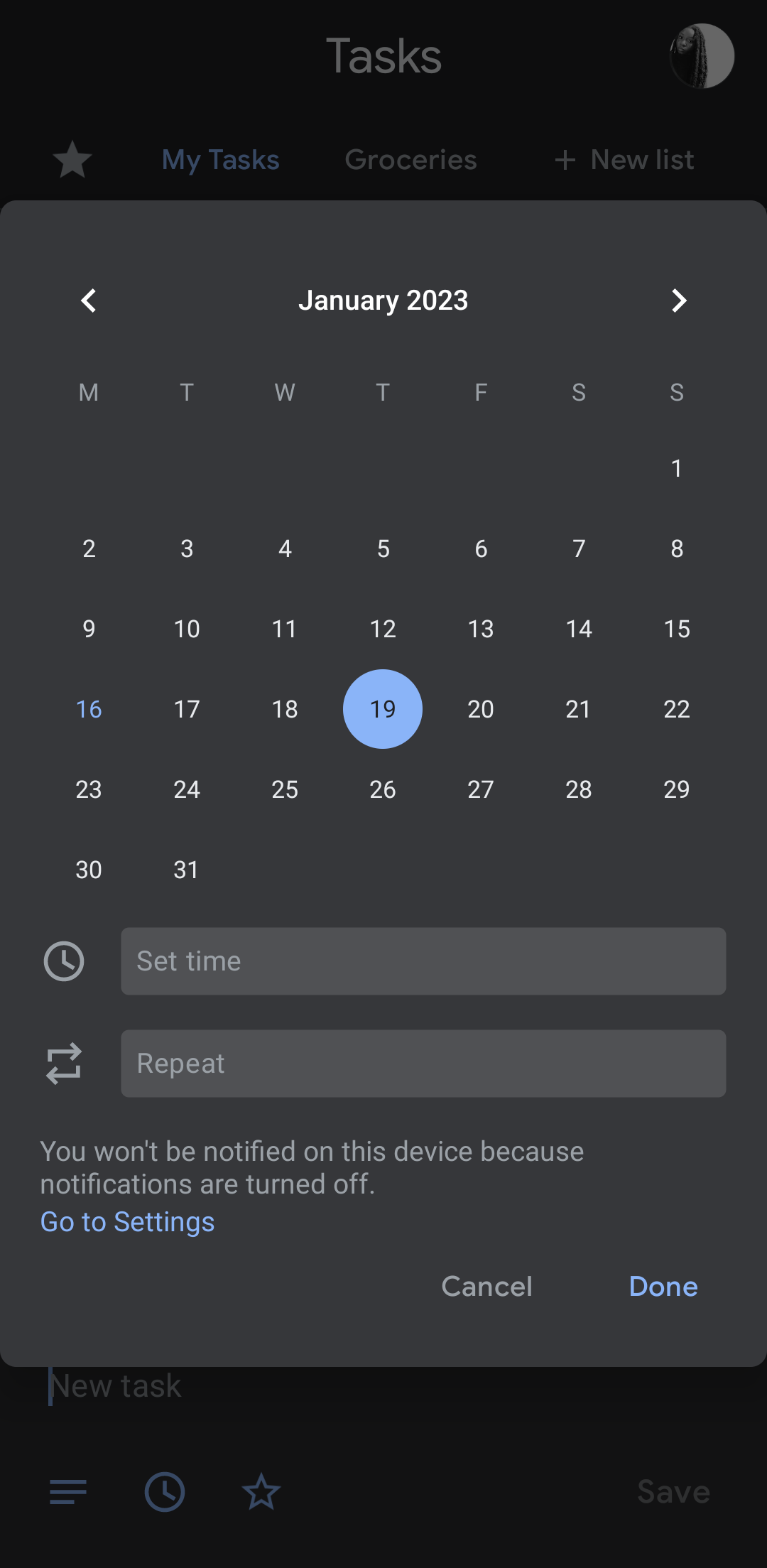
- Tap Set time to display a clock. To choose the time you want to receive notifications, drag the clock's hand.
- Select either AM or PM to switch between morning and nighttime. Alternatively, use the keyboard icon to type your preferred time.
-
Tap OK when done.
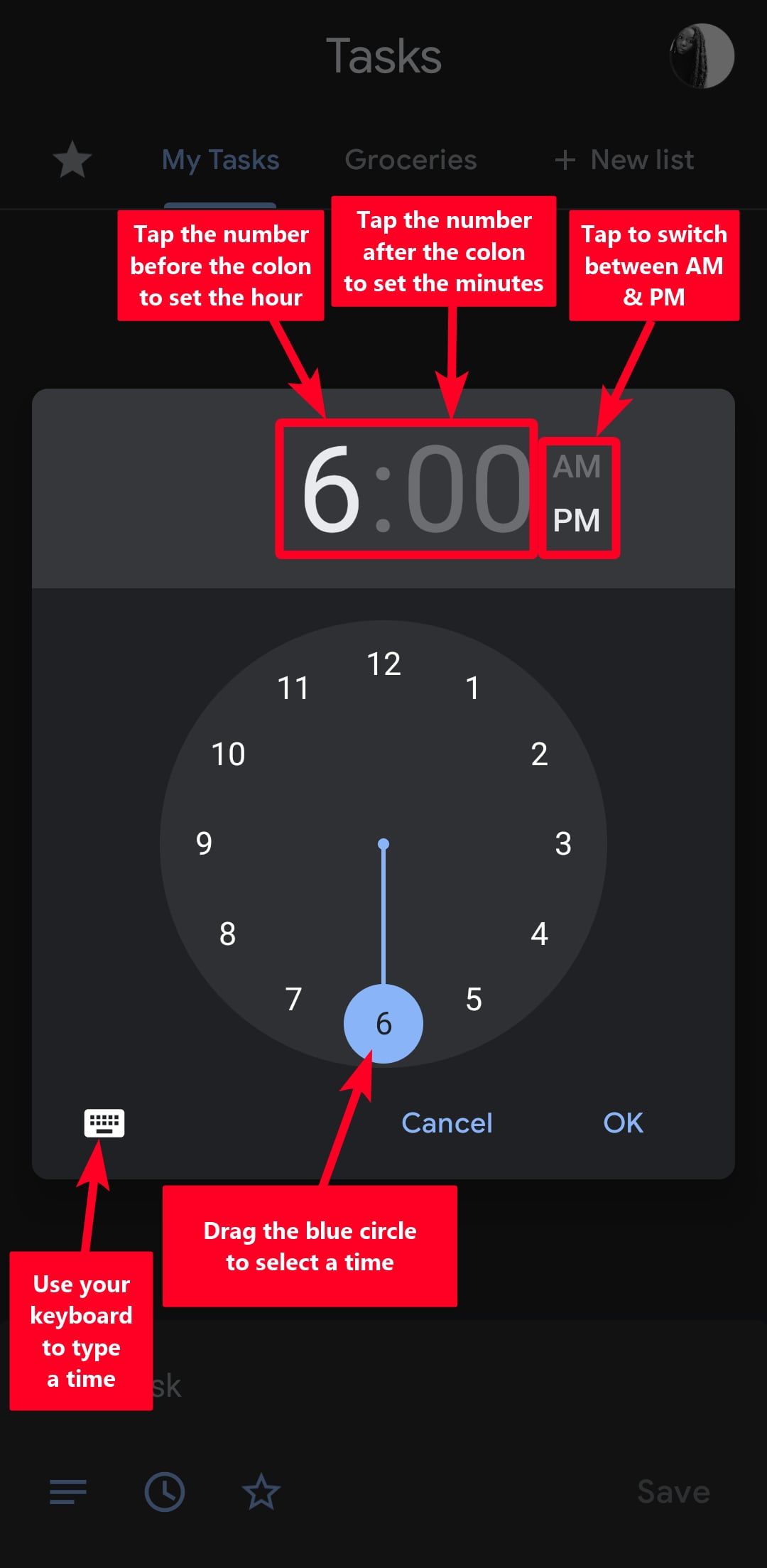
- Tap Repeat to open a new menu.
-
Use the drop-down box and the numbered box beside it to type how many days, weeks, months, or years the task will repeat.
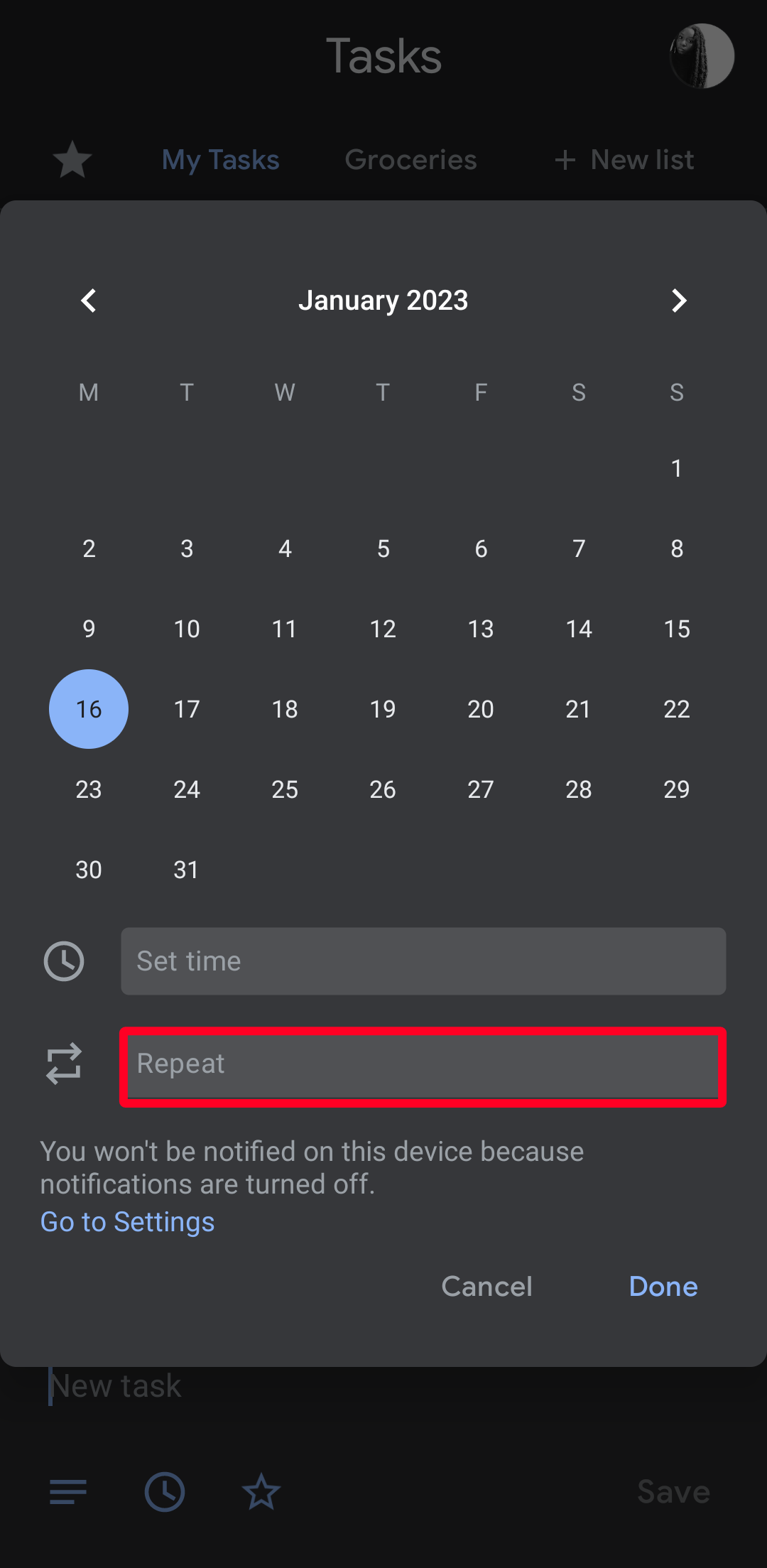
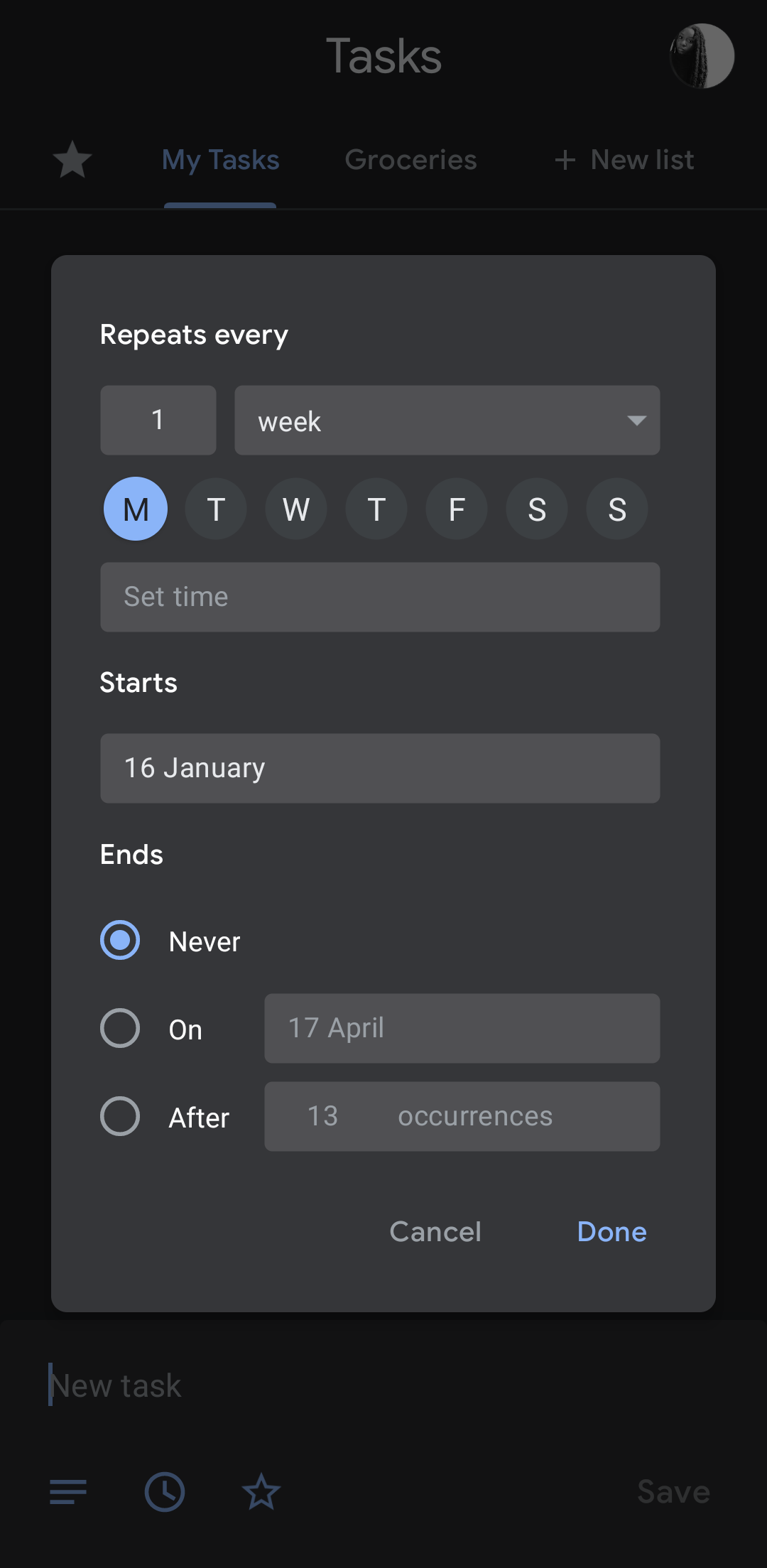
- Go to the Starts section and select the date you want notifications for the tasks to start.
- Go to the Ends section and tap Never to receive notifications for the task continuously.
- Select On to choose a date when the notifications will stop.
- Select After to end your task after several occurrences.
- Tap OK when you're done.
Create recurring tasks on computers
- Open Google Docs, Sheets, or Slides.
-
Go to the sidebar on the right side of your screen and tap the Tasks icon. The sidebar expands and shows an overview of your tasks.
- Select Add a task.
-
Choose Date/time to set when you want to receive notifications for the task.
-
Use the drop-down box and the numbered box to choose how many days, weeks, months, or years the task will repeat.
- Go to the Starts section and choose the date you want notifications for the tasks to start.
- Go to the Ends section and tap Never to receive notifications continuously without ending.
- Select On to choose a stop date for the notifications.
- Select After to end your task after several occurrences.
- Click OK when you're done.
Create new lists
Create lists for shopping, groceries, holidays, and formal meetings on Google Tasks. By default, the app creates a My Tasks list for you. Although you can't delete the list, you can rename it and add tasks to it.
Create lists on Android phones
-
Open Google Tasks and tap New list.
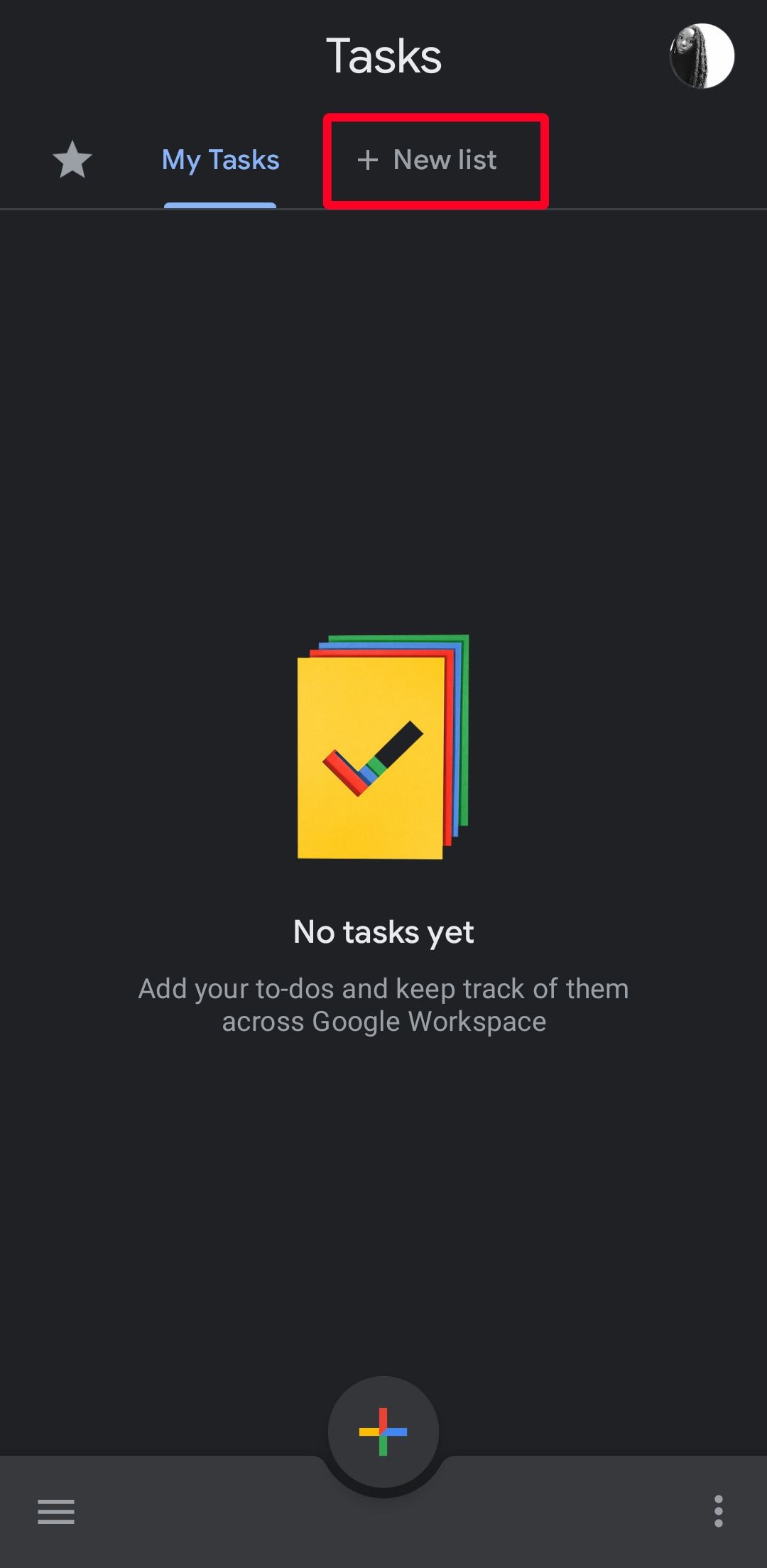
-
Alternatively, tap the hamburger icon in the lower-left corner. Then tap Create new list.
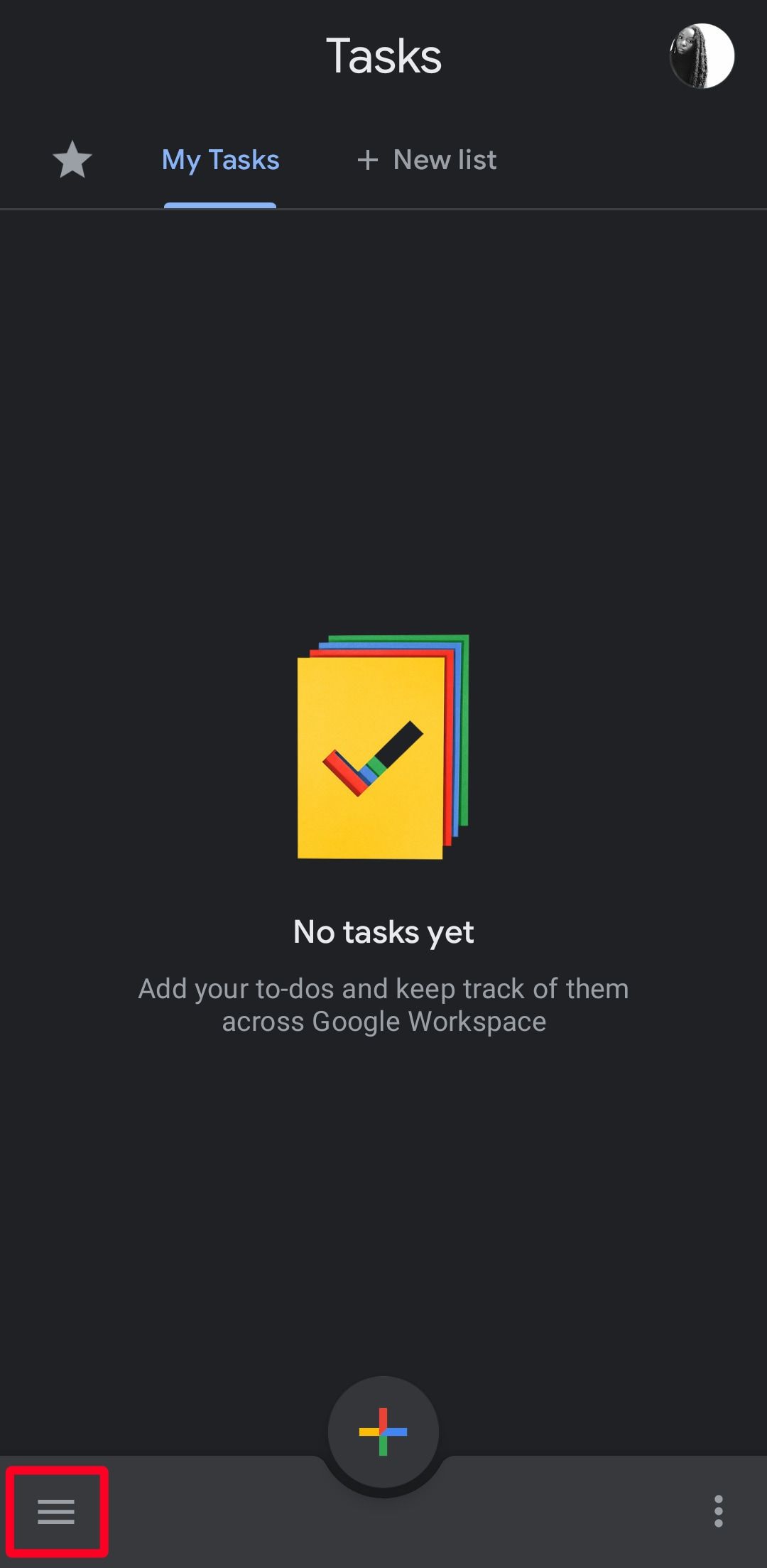
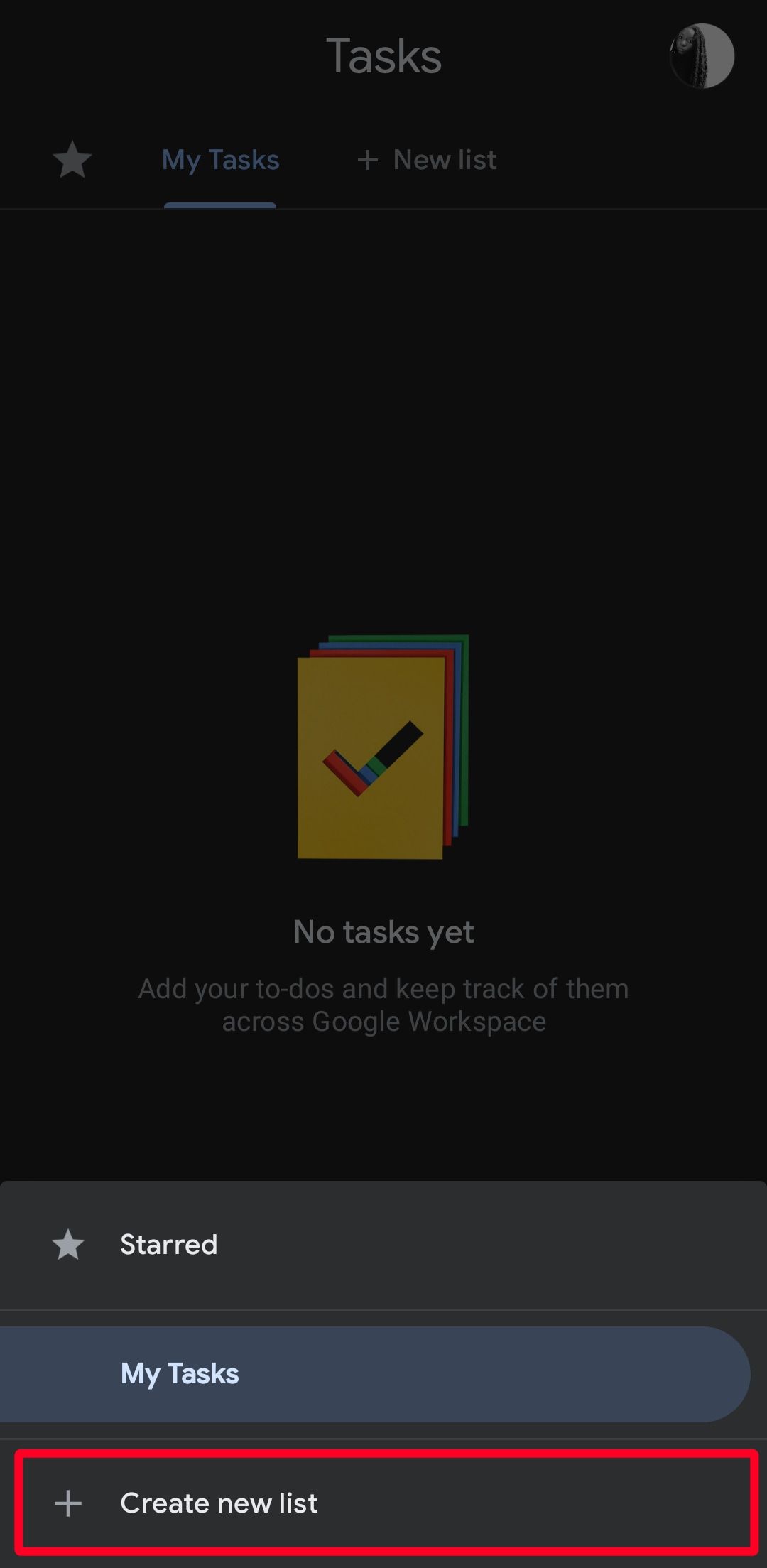
-
Enter a title for your list and tap Done. Your new list appears in the main menu of the Tasks app.
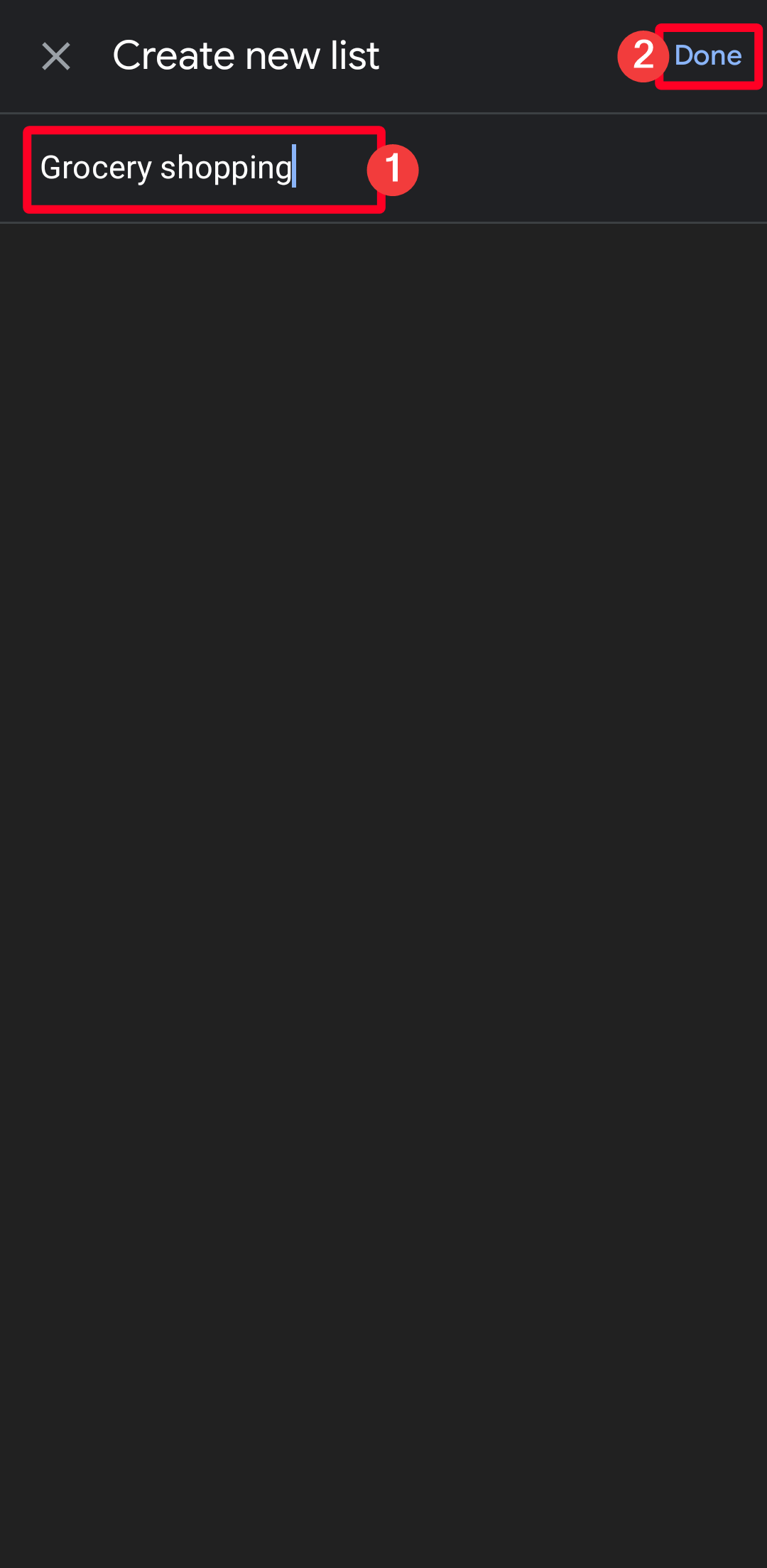
Create lists on computers
- Open Google Docs, Sheets, or Slides on the web.
- Click the Tasks icon in the right sidebar.
-
Click the drop-down arrow and select Create new list.
- Type a name for the list and click Done.
Add subtasks
Use subtasks to divide complicated tasks into smaller parts. Subtasks give you a clear view of your priorities and help you complete them faster. For example, if your task is to bake a cake, your subtasks are a breakdown of the procedures. This arrangement keeps you from missing key steps in the process.
Add subtasks on Android smartphones
- Open Google Tasks.
- Tap + to create a new task.
- Type a name for your task.
- Select Save when you're done.
- Tap the new task you created.
-
Select Add subtasks.
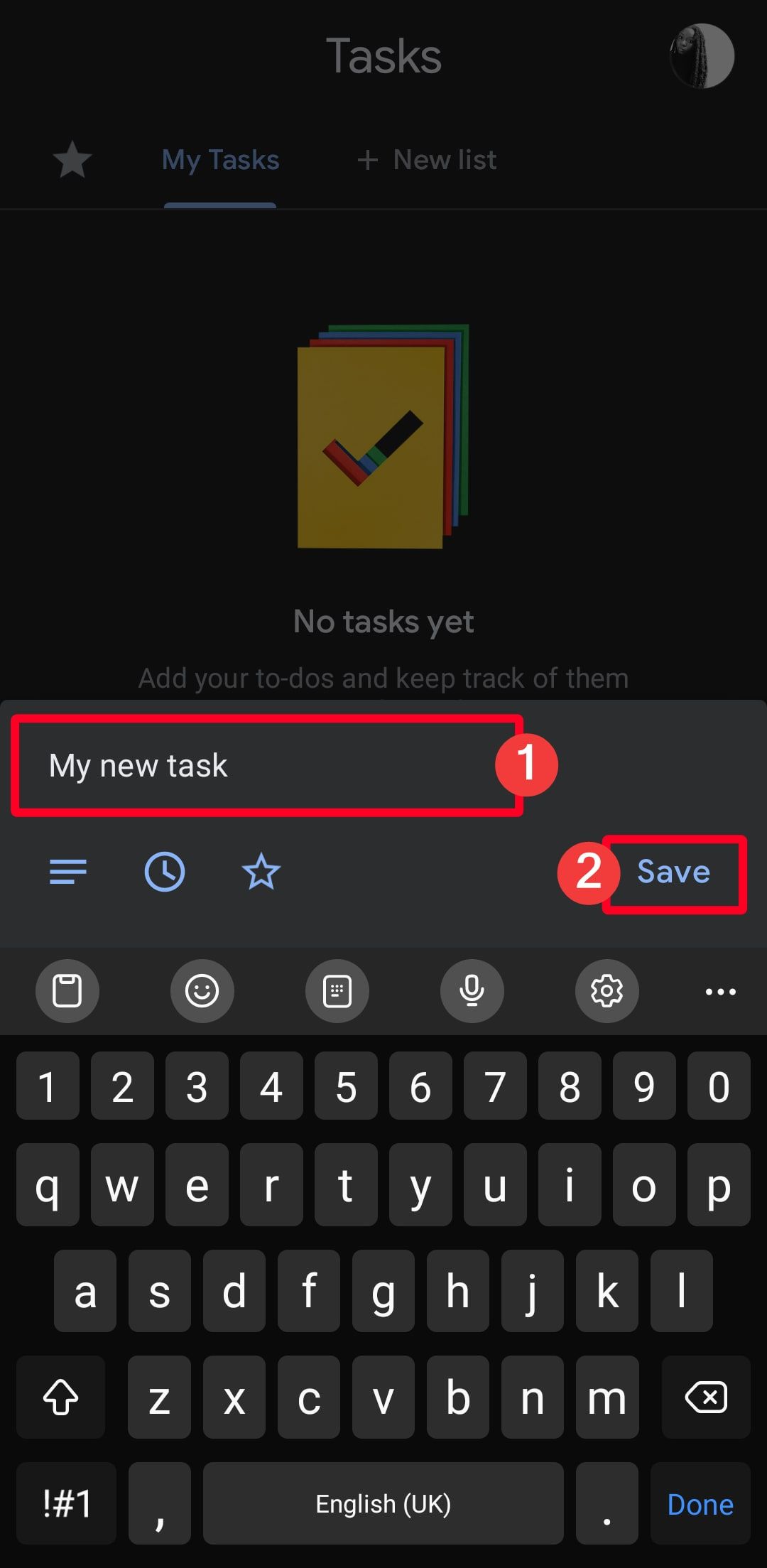
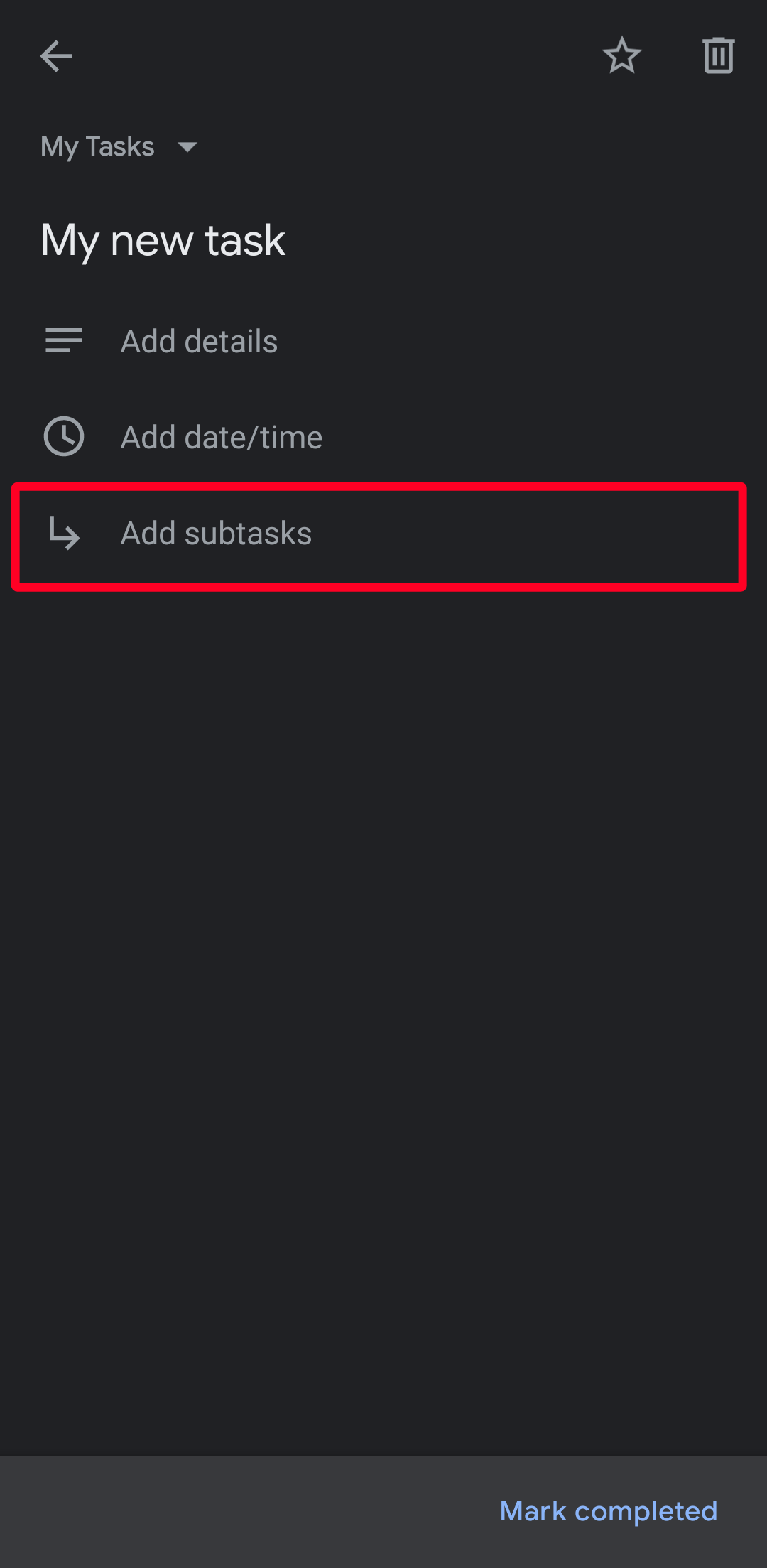
- Enter a title.
-
To insert another subtask, tap Add subtasks.
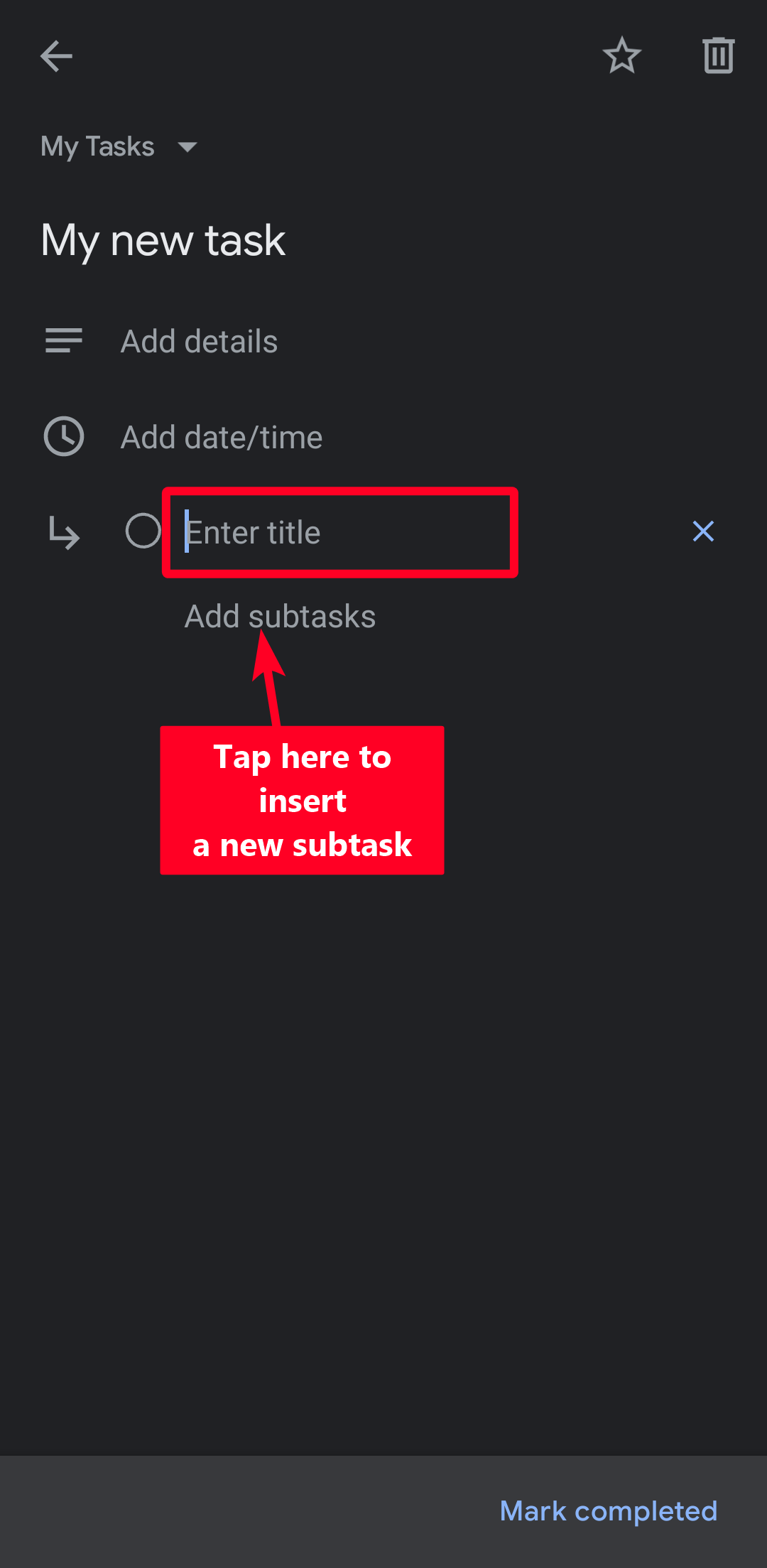
- Tap the Back button in the navigation bar to return to the app's main menu.
- Subtasks appear as individual tasks in your app's menu. To differentiate between subtasks and regular tasks, tap the three-dot icon below your screen.
-
Select Sort by.
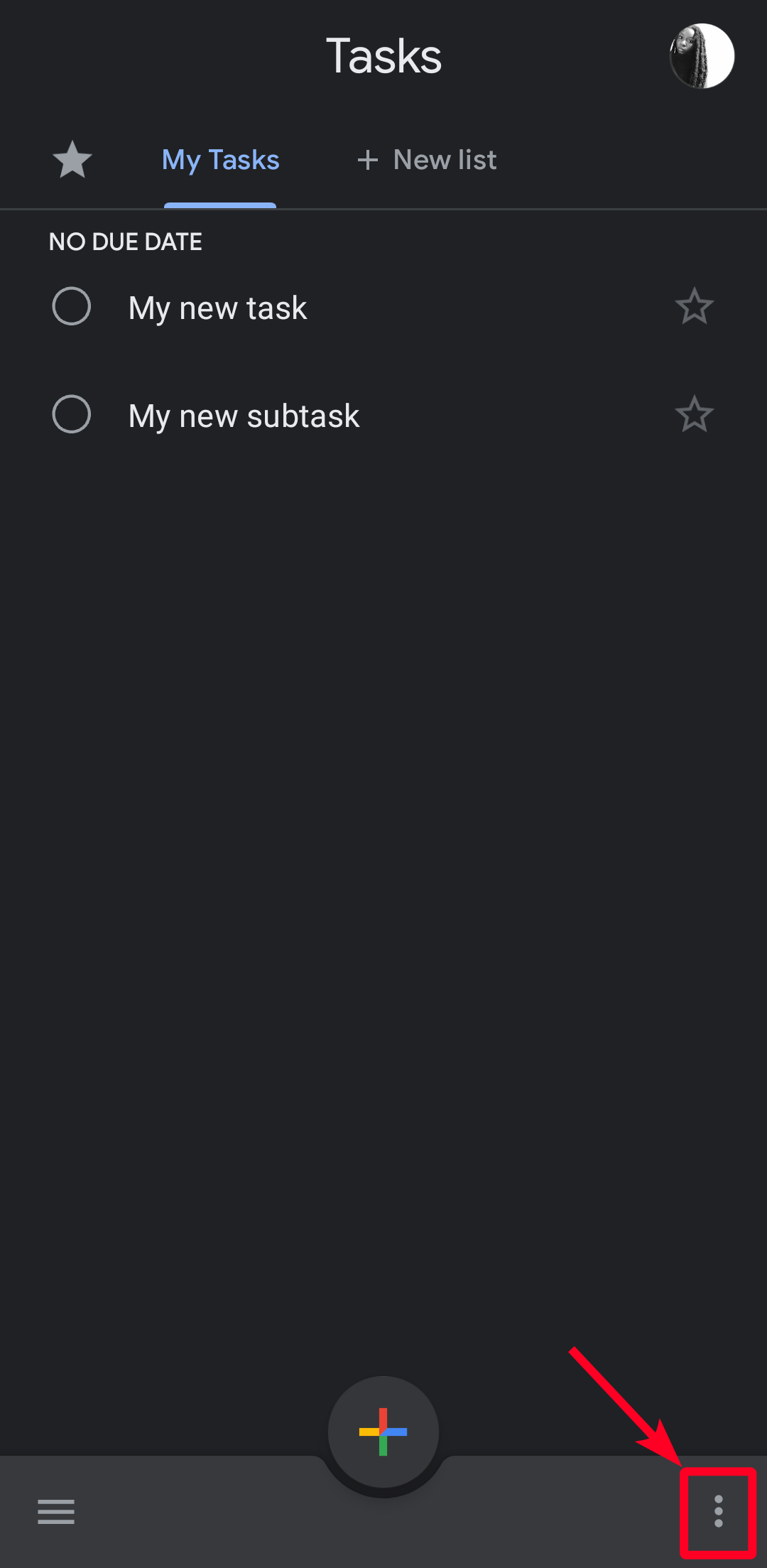
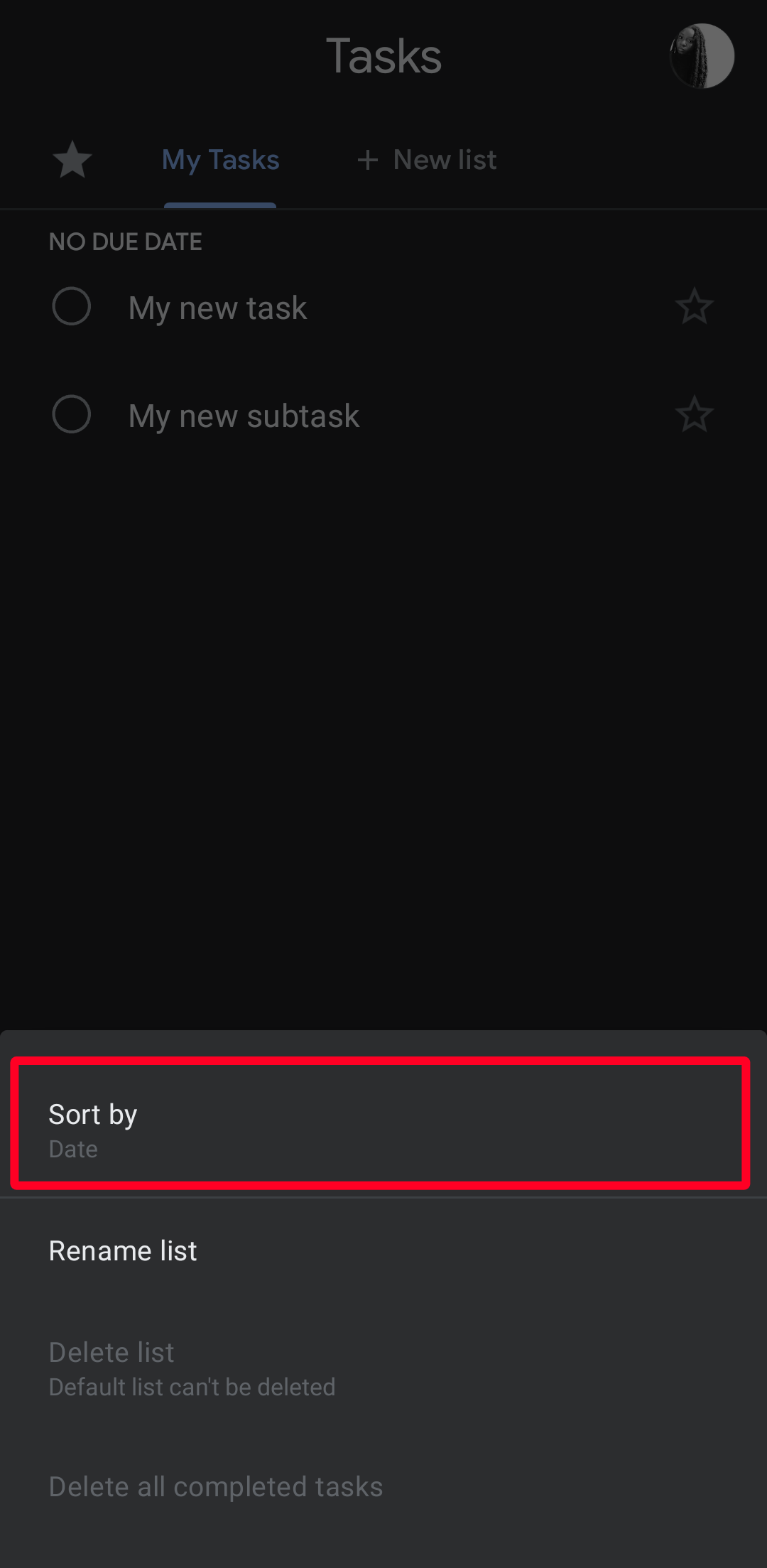
-
Tap My order. Your subtasks align slightly to the right under the main tasks.
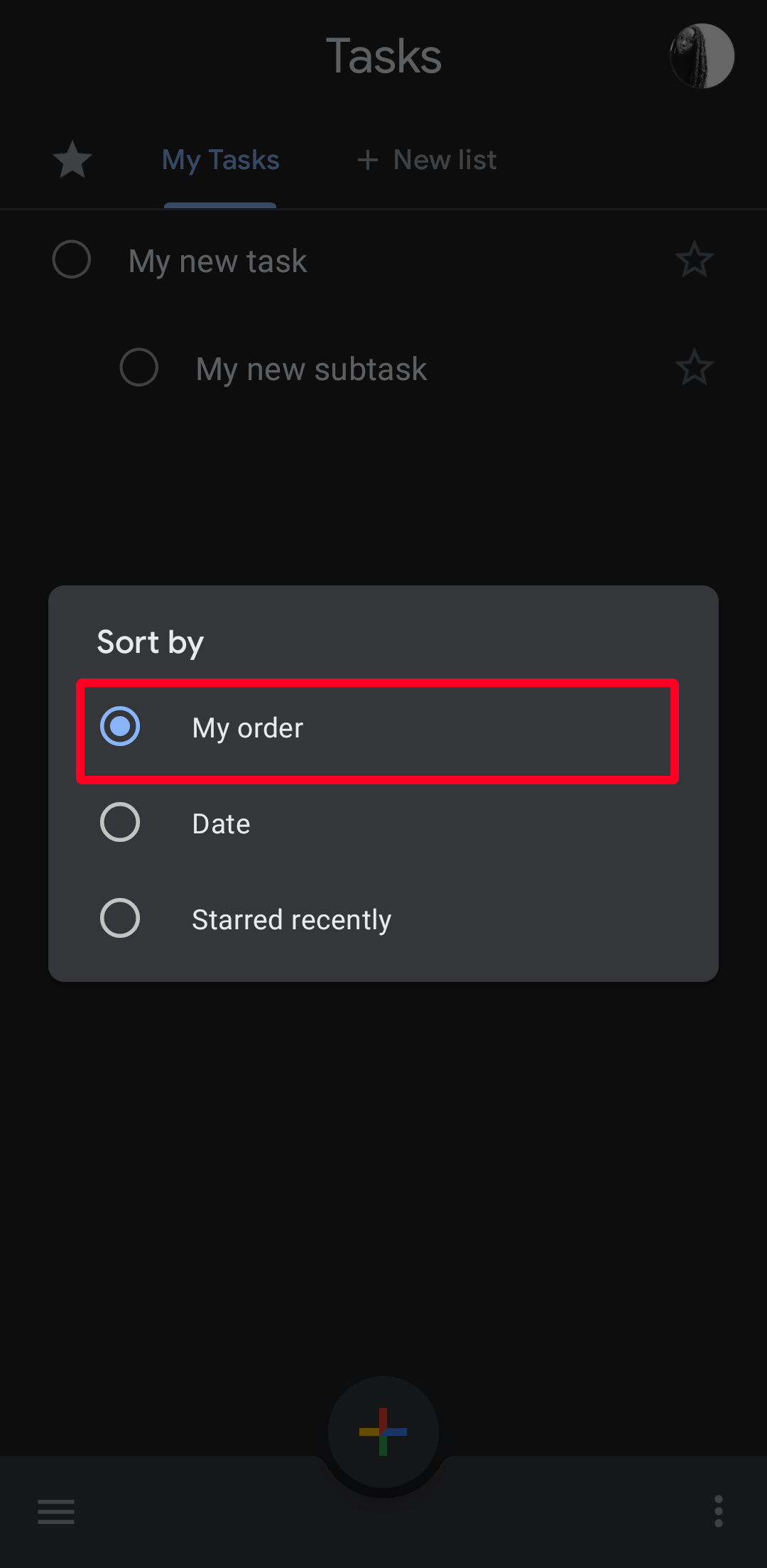
Add subtasks on computers
- Open Google Docs, Sheets, or Slides on the web.
- Click the Tasks icon.
-
Click the three-dot icon beside the task's name and select Add a subtask. A new and automatically indented subtask appears under the main task.
Add details
You can leave a small note under every task or subtask to describe what it's about or add more information to it, but you can't add media files like videos and images. However, the Details section supports up to 700 words, so you can leave as much information about your task as needed.
Add task details on Android smartphones
- Open Google Tasks.
- Tap a task or subtask you created.
-
Tap Add details.
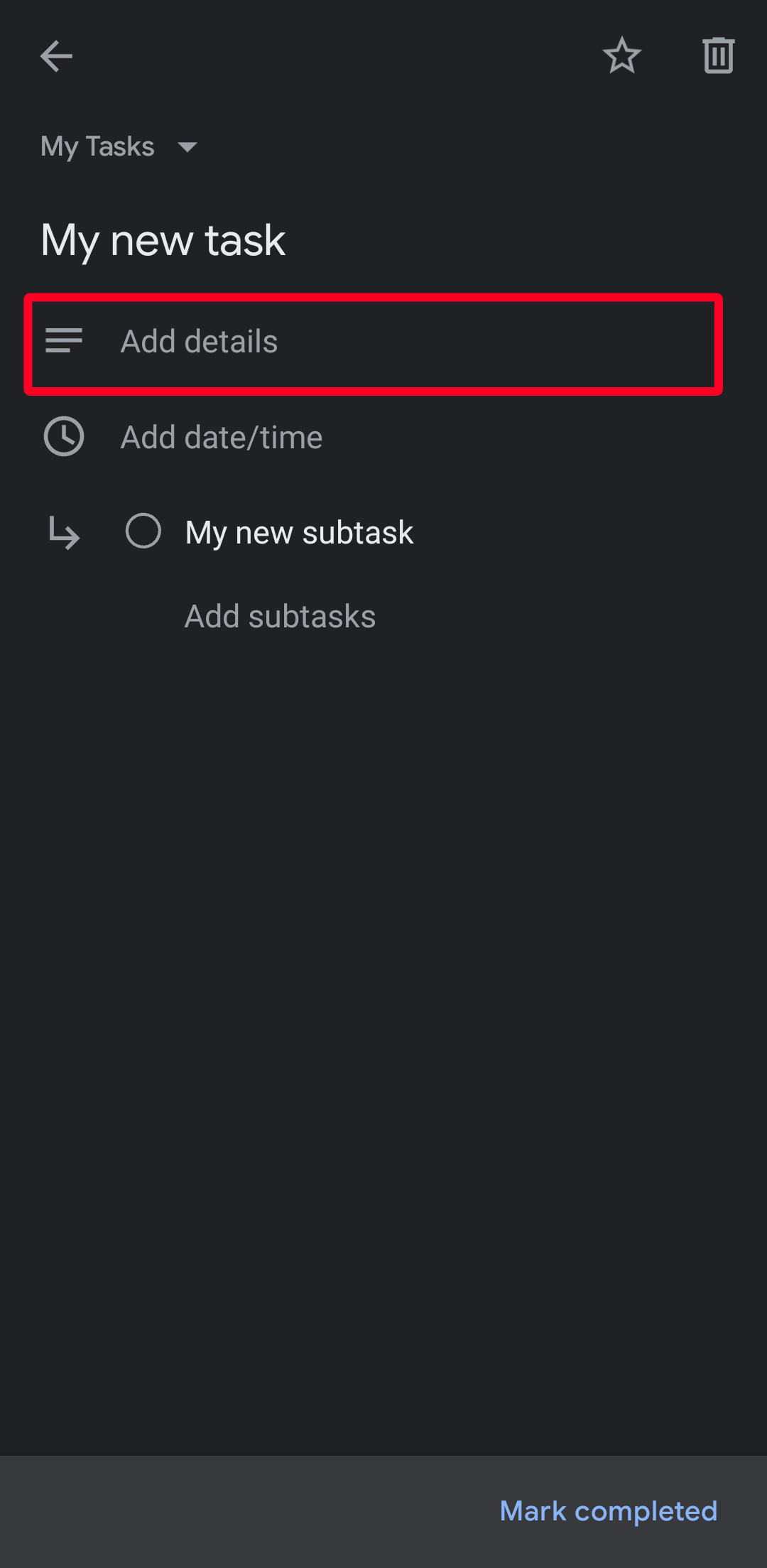
- Type a short description for your task and tap Save.
Add task details on computers
- Open Google Docs, Sheets, or Slides on the web.
- Tap the Tasks icon.
- Tap a task to expand it.
-
Tap Details and add a short description for your task. There's no option to save your description. All three workspace apps automatically save it for you.
Move tasks between lists
If you create a new task in the wrong list, you can move it to the correct destination. You don't have to delete it and create a new one. However, you can't move subtasks independently because they're attached to the main task. The best option is to erase the subtask and recreate it under the right task in the right list.
Move tasks between lists on Android smartphones
- Open Google Tasks.
- Tap the task you want to move to another list.
- Tap the drop-down arrow beside the task name.
-
Select your preferred list, and the task moves there.
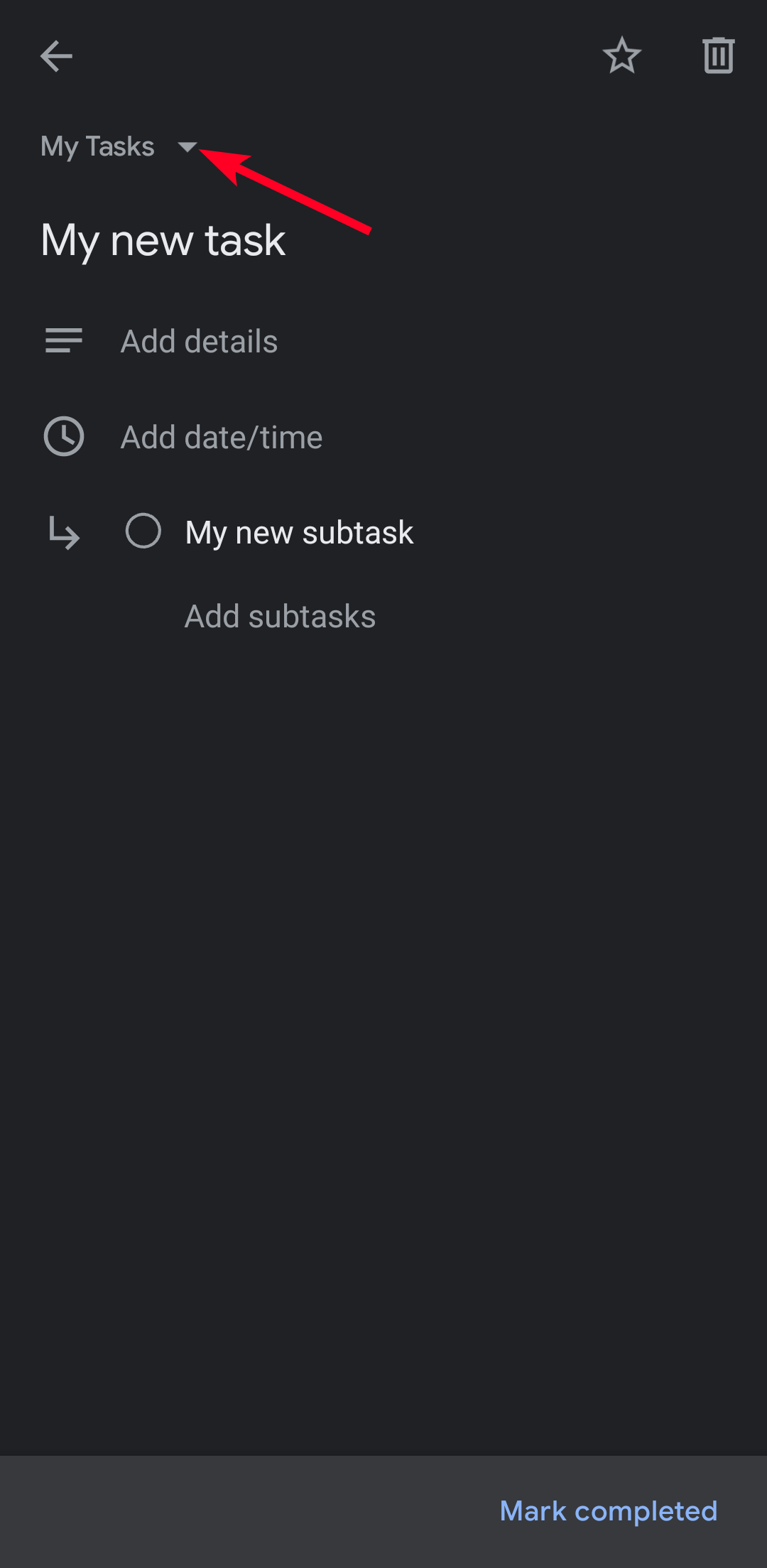
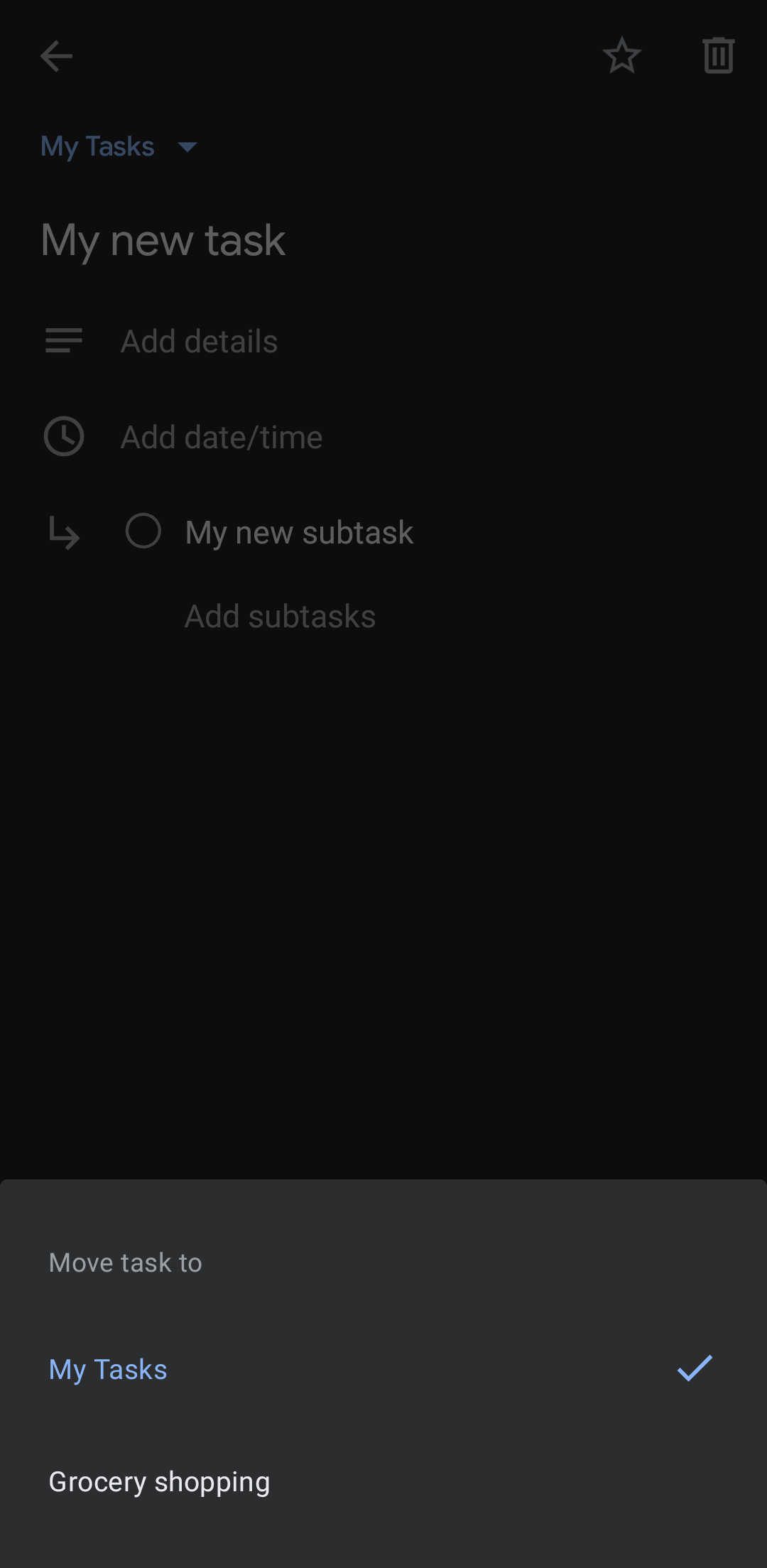
Move tasks between lists on computers
- Open the Google Docs, Sheets, or Slides web app.
- Click the Tasks icon.
-
Click the three-dot icon and select the list to move the task into.
Move Google Assistant reminders to Tasks
When you create a new reminder or make changes to existing ones on your Google Assistant app, the changes don't sync with the Tasks app. You need to migrate your existing reminders from the Assistant app to Tasks. Moving your reminders gives you a less cluttered interface and a more organized notification system.
Some Android smartphones, like the Pixel 7, have Google Assistant preinstalled, while others need to install it from the Google Play Store. Google has not released an official app for PCs, but you can migrate your Assistant reminders to Tasks using Google Docs, Sheets, or Slides.
Move Google Assistant reminders on Android smartphones
-
Open Google Tasks and tap your profile icon.
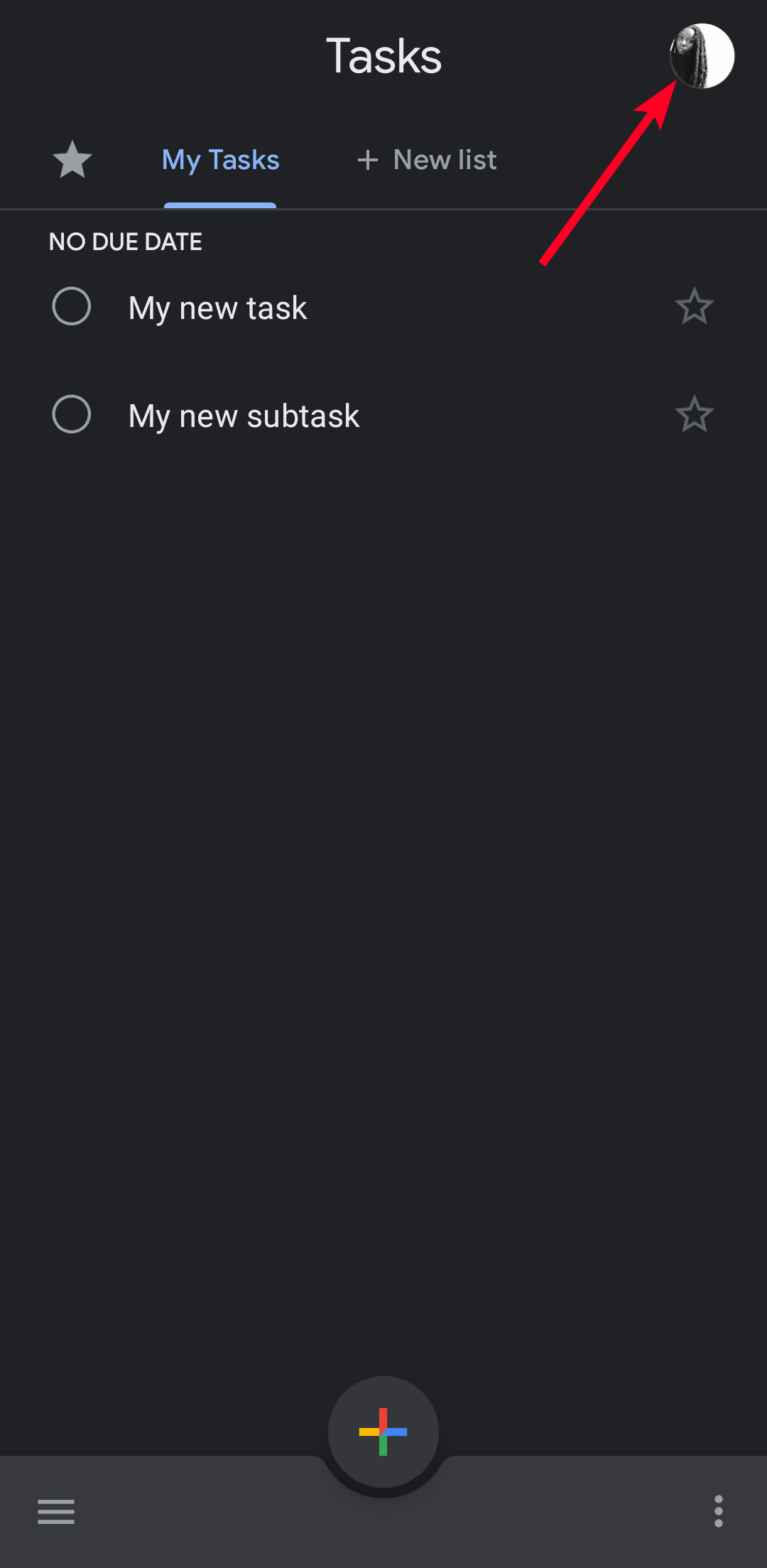
-
Tap Tasks settings > Move reminders to Tasks.
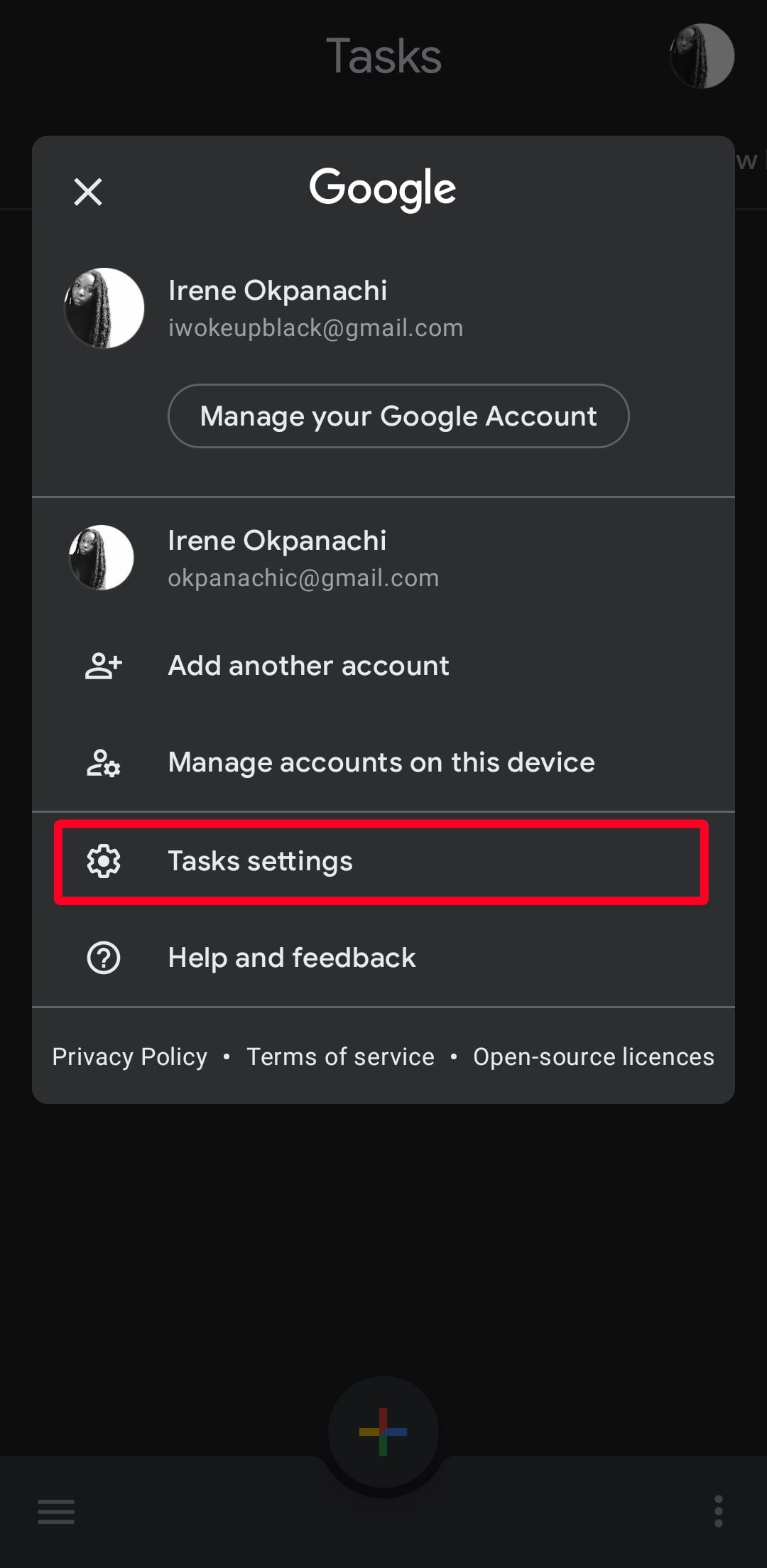
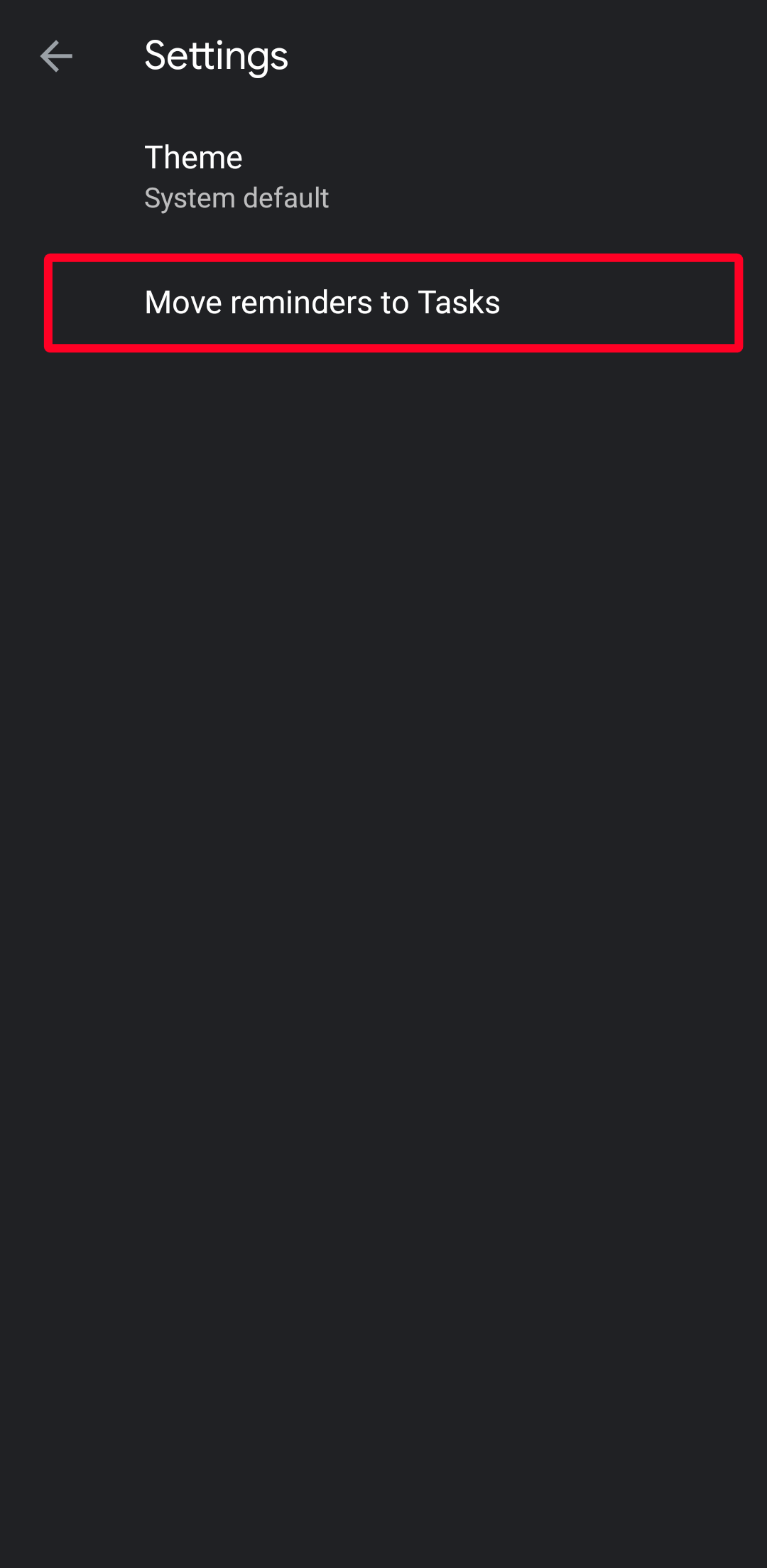
- Tap Select a list to choose the list you want to move your reminders into.
- Tap Proceed. Google Tasks migrates your reminders from Google Assistant, and you can view them when you return to the Tasks app.
Move Google Assistant reminders on computers
- Click the Tasks icon in Google Docs, Sheets, or Slides,
- Click the three-dot icon beside Add a task.
-
Click Move reminders to Tasks.
- Select a list to move the reminder into.
- Tap Proceed.
Use a dark theme
In the Google Tasks app, you can choose from three themes:
- Light: Gives your app a white background and darker text. While bright and attractive, it consumes more battery than the dark theme.
- Dark: Includes light-colored texts of white and blue on a dark background. Use this theme to conserve battery life. It's the best option for your eyesight and more comfortable to use in the dark.
- System default: Uses the theme your device uses. If your device's settings are set to dark or light themes, that's what you see on the app.
Dark mode is available for Google Tasks on Android phones but not for the Google Docs, Sheets, and Slides web apps. You'll download a Chrome extension to use Dark mode on your PC.
- Open the Google Tasks app on your phone and tap your profile icon.
- Go to Tasks settings > Theme.
-
Select Dark.
Explore Tasks widgets
Google Tasks widgets allow you to quickly view and use basic functionalities like creating, moving, and marking tasks from your phone's homescreen. You can drag them to the desired position and enlarge or reduce the size. Use the widgets to reduce the time it takes to find and open the Tasks app. Tasks widgets are not available for PCs.
- Find a blank spot on your phone's homescreen and long press on it. A new menu appears.
- Tap Widgets.
-
Scroll up and tap Tasks. You'll find two Google Tasks widgets.
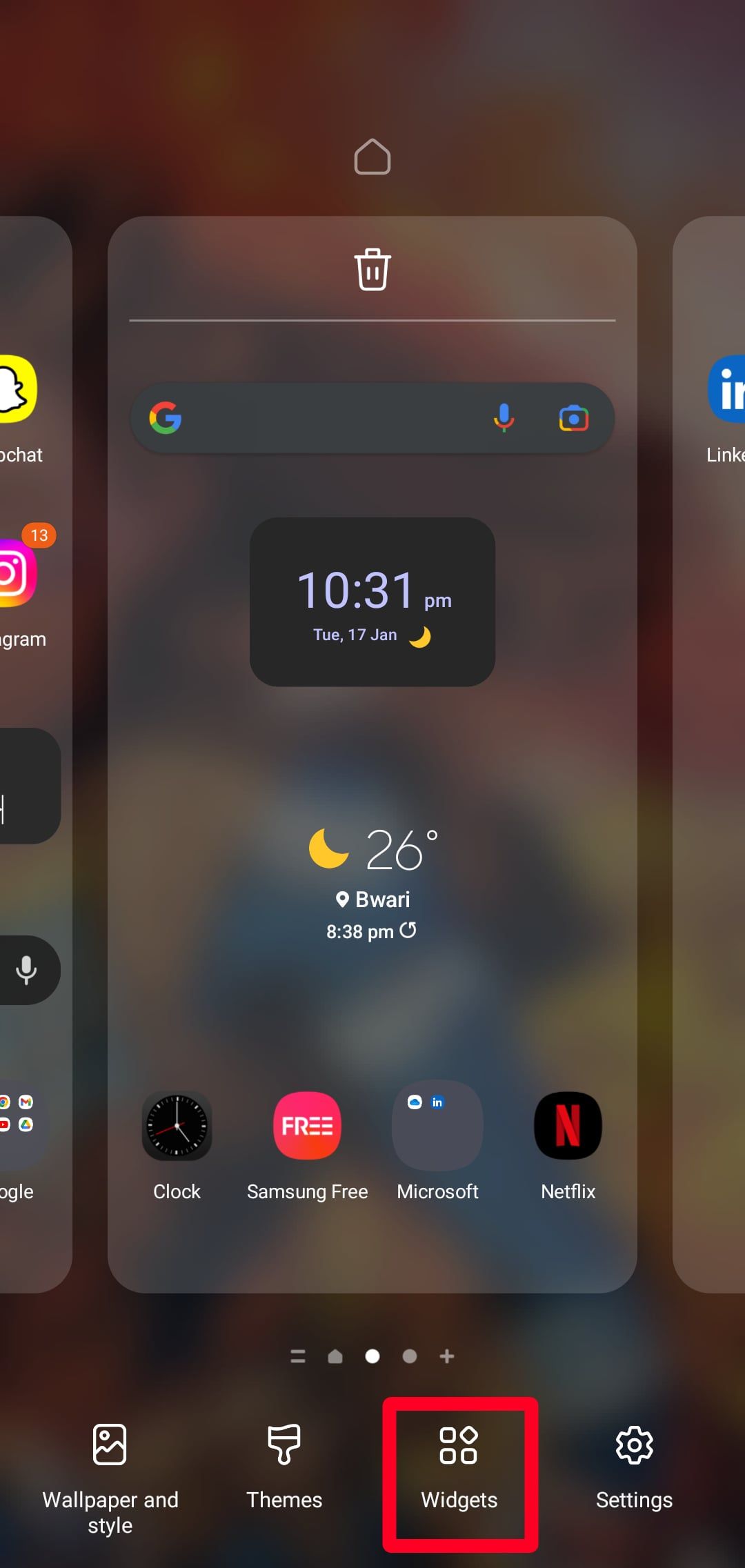
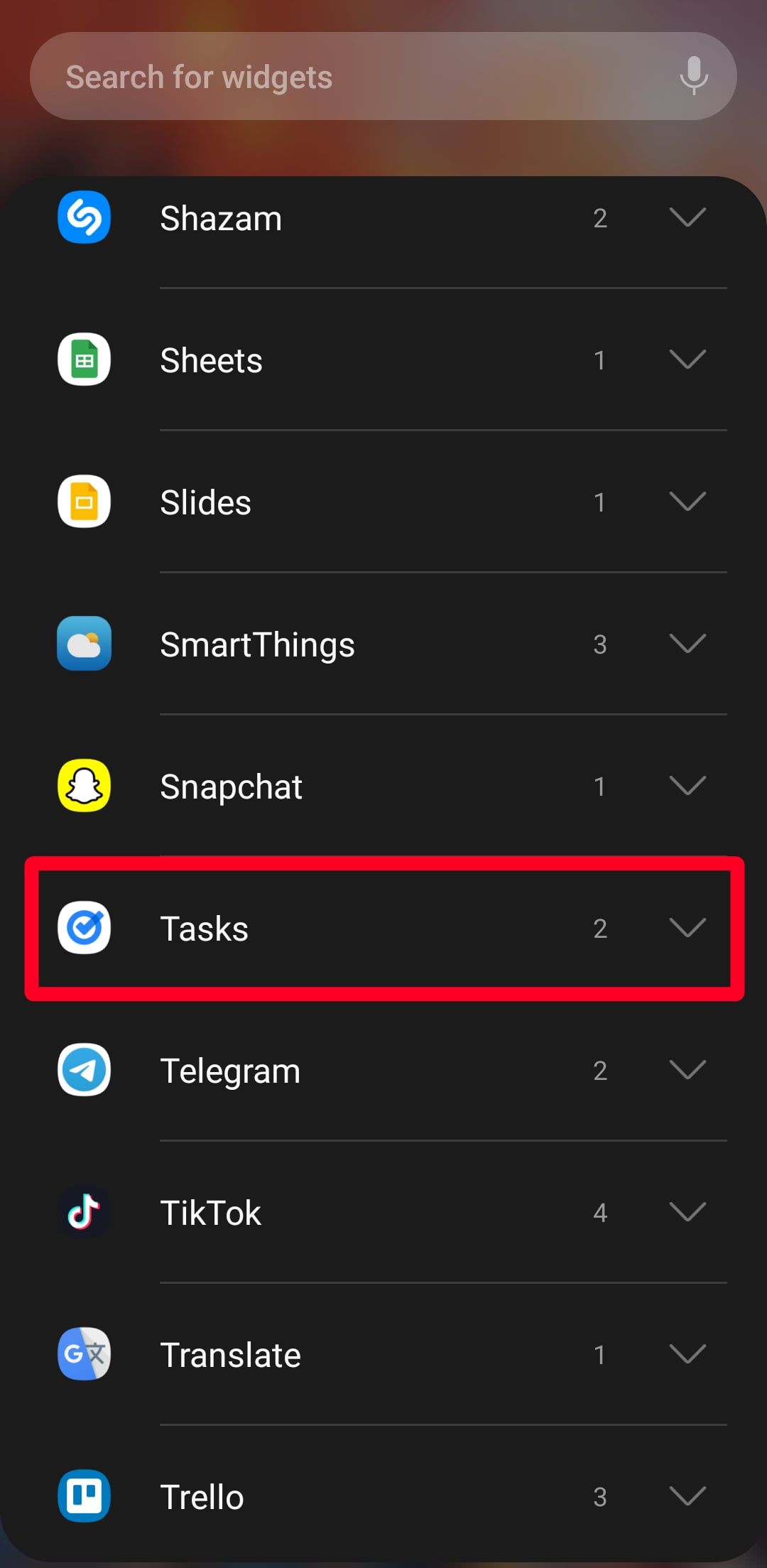
- Tap the first widget to create, move, mark, or view tasks at a glance. Tap the second widget to create tasks only.
- Your selected widget appears on your homescreen. Long press and drag the widget to change its position.
- Depending on the widget, you may be able to adjust its size. Long press the widget and drag the blue circles around its edges to change the size.
Move Gmail emails to Google Tasks
Google Tasks integrates with Gmail so that you can turn emails into tasks. The email isn't deleted. You can view it in the Gmail app. Google Tasks uses the email's subject as your task's title, but you can edit it. The app also links to the email you created the task from so that you can locate it easily.
Move emails to Google Tasks on Android smartphones
- Open the Gmail app.
- Locate the email you want to add to Google Tasks.
-
Open the email and tap the three-dot icon at the top of your screen. You can't move multiple emails to Google Tasks at a time.
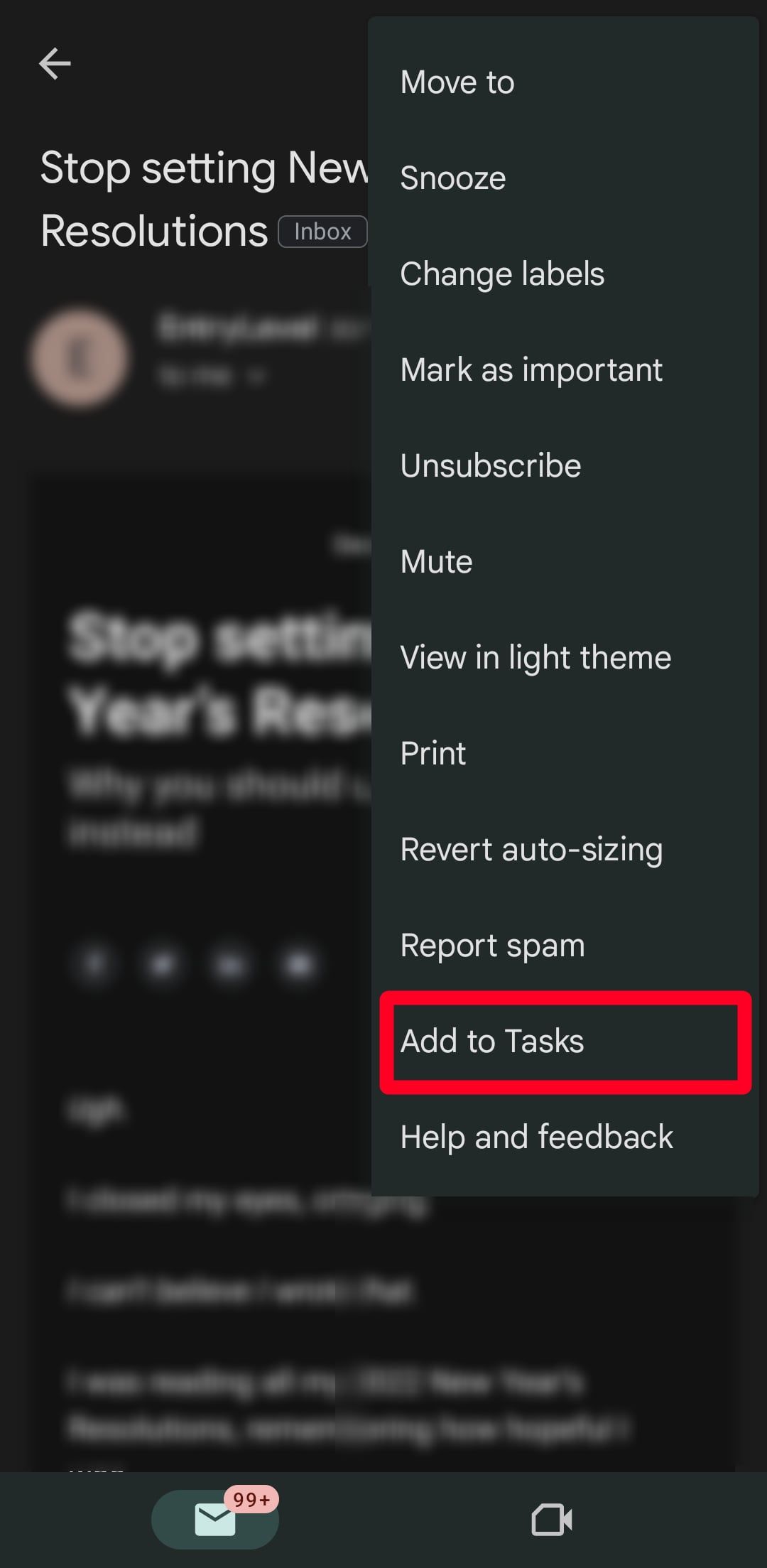
- Select Add to Tasks. You'll see the New task created message below your screen.
Move emails to Google Tasks on computers
-
Open your browser and access your Gmail account. On the Chrome browser, tap the Google Apps icon beside your profile icon and click Gmail.
- Go to your Gmail inbox and click the Tasks icon to expand it.
-
Drag and drop an email into the Tasks menu to add it as a task.
- To create multiple tasks, click the checkboxes beside the emails to select them. Then, drag and drop them into the Tasks menu. You can modify the task names and dates afterward.
Share Google Tasks from Docs, Sheets, and Slides
Since Google Tasks integrates with Google Docs, Sheets, and Slides, you can create tasks inside your documents from your computer. All three Workspace apps support real-time collaboration, so you can grant people viewing or editing access to your documents to allow them to view and complete tasks. Google Docs notifies you when someone changes anything in your document, and you can monitor their progress in completing the tasks.
Never miss a reminder again
Google Tasks is a simple yet handy task management app that helps you stay organized. The best part is that the app integrates seamlessly with Google Workspace apps like Gmail, Google Docs, and Slides. But if the bare-bones UI and lack of advanced features like tags and folders puts you off, you can try out alternative task management apps for Android.

